EQ plays a crucial role in sculpting your sound and achieving that perfect mix.
But with countless EQ plugins available in the market, it can be super hard to choose the right ones.
Well don’t worry, we’ve got your back.
Today, we’ll dive deep into the world of the best EQ plugins, sharing our top picks, expert tips, and a wealth of information to help you elevate your music production game.
Here’s a sneak peek at what you’ll learn in this guide:
- Different EQ types & their specific applications ✓
- The 12 best EQ plugins for 2023, with in-depth reviews & standout features ✓
- Advanced tips for each unique plugin ✓
- How to use the best EQ plugins effectively in your music production workflow ✓
- Expert techniques for getting the most out of your EQ plugins ✓
By the end of this guide, you’ll be equipped with the knowledge and tools to make informed decisions and find the perfect EQ plugins for your unique music production needs.
Let’s dive in!
Table of Contents
- What Is EQ?
- Different EQ Types
- Additive and Subtractive EQ
- Linear Phase EQ and Phase Shift
- The 12 Best EQ Plugins of 2023
- #1. The Best All-Around EQ Plugin: Sound Doctor
- #2. The Best Parametric EQ Plugin: Fabfilter Pro-Q3
- #3. Best Vintage EQ Plugin: PuigTec EQs by Waves
- #4. Best Free EQ Plugin: TDR Nova
- #5. Best EQ for Air and Clarity: Eiosis AirEQ by Slate Digital
- #6. Best Hybrid EQ Plugin: H-EQ Hybrid Equalizer by Waves Plugins
- #7. Best AI-Powered EQ Plugin: smart:EQ 3 by Sonible
- #8. Best EQ for Adding Character: Mäag Audio EQ4
- #9. Best Hardware Replica EQ Plugin: Waves API Collection
- #10. Best Harmonious EQ Plugin: Soundtoys Sie-Q
- #11. Best Adaptive EQ Plugin: Waves F6 Floating-Band Dynamic EQ
- #12. Best Innovative EQ Plugin: Infinity EQ by Slate Digital
- The Importance of Low Pass Filters and High Pass Filters in EQ
- Building Your Plugin Library
- Conclusion
What Is EQ?
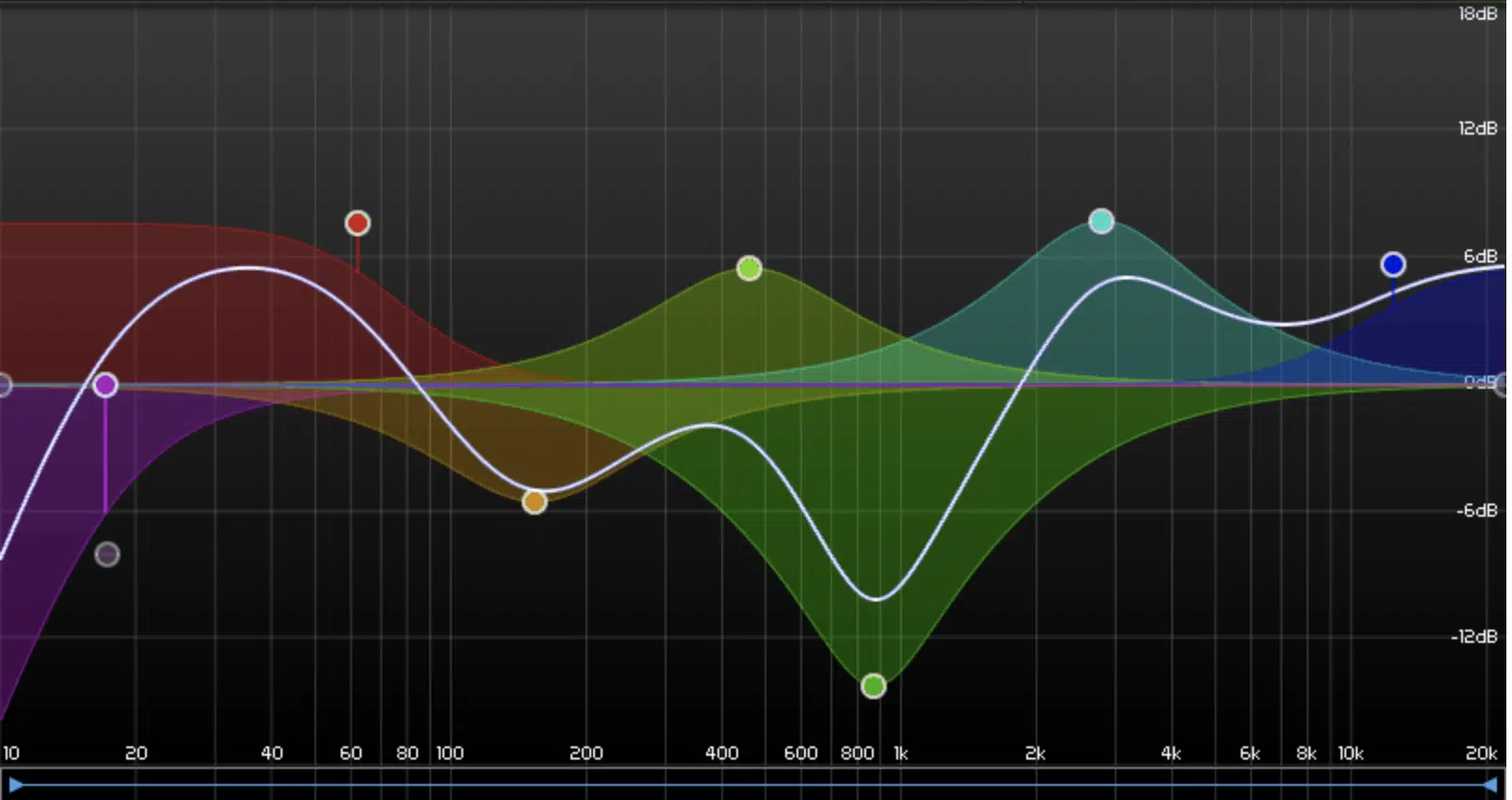
Equalization, or EQ, is the process of adjusting the balance between frequency components within an audio signal.
By manipulating the frequency spectrum, you can bring out the best in your tracks, eliminate problem frequencies, and achieve a balanced mix that translates well on various playback systems.
EQ plays a vital role when you’re mixing as it helps you shape the overall tonal balance of your track.
It allows you to:
- Emphasize or de-emphasize certain elements
- Control the overall frequency response
- Fix any issues that might arise from clashing frequencies or resonances
Needless to say, if you’re planning on having a fire mix that doesn’t sound amateurish, mastering EQ is an absolute must.
Different EQ Types
-
Parametric EQ
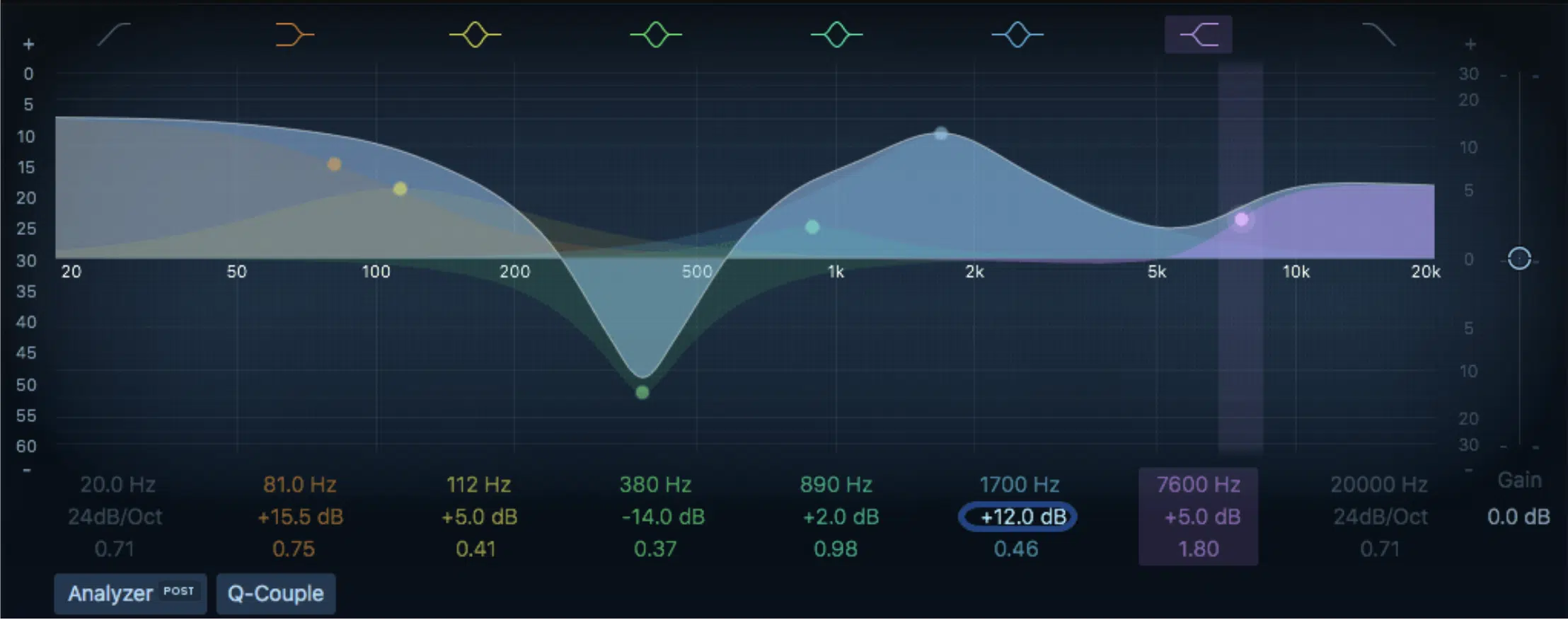
Parametric EQs are arguably the most versatile and powerful type of EQ.
They allow you to adjust the gain, frequency, and bandwidth (Q) of individual bands.
This provides you with a high level of control and precision when shaping your mix.
Parametric EQs are excellent for surgical EQ tasks, such as:
- Removing problematic frequencies
- Enhancing specific elements in a mix
- Creating unique sound design effects or eq sounds
Their flexibility makes them a staple in most music production workflows.
-
Dynamic EQ
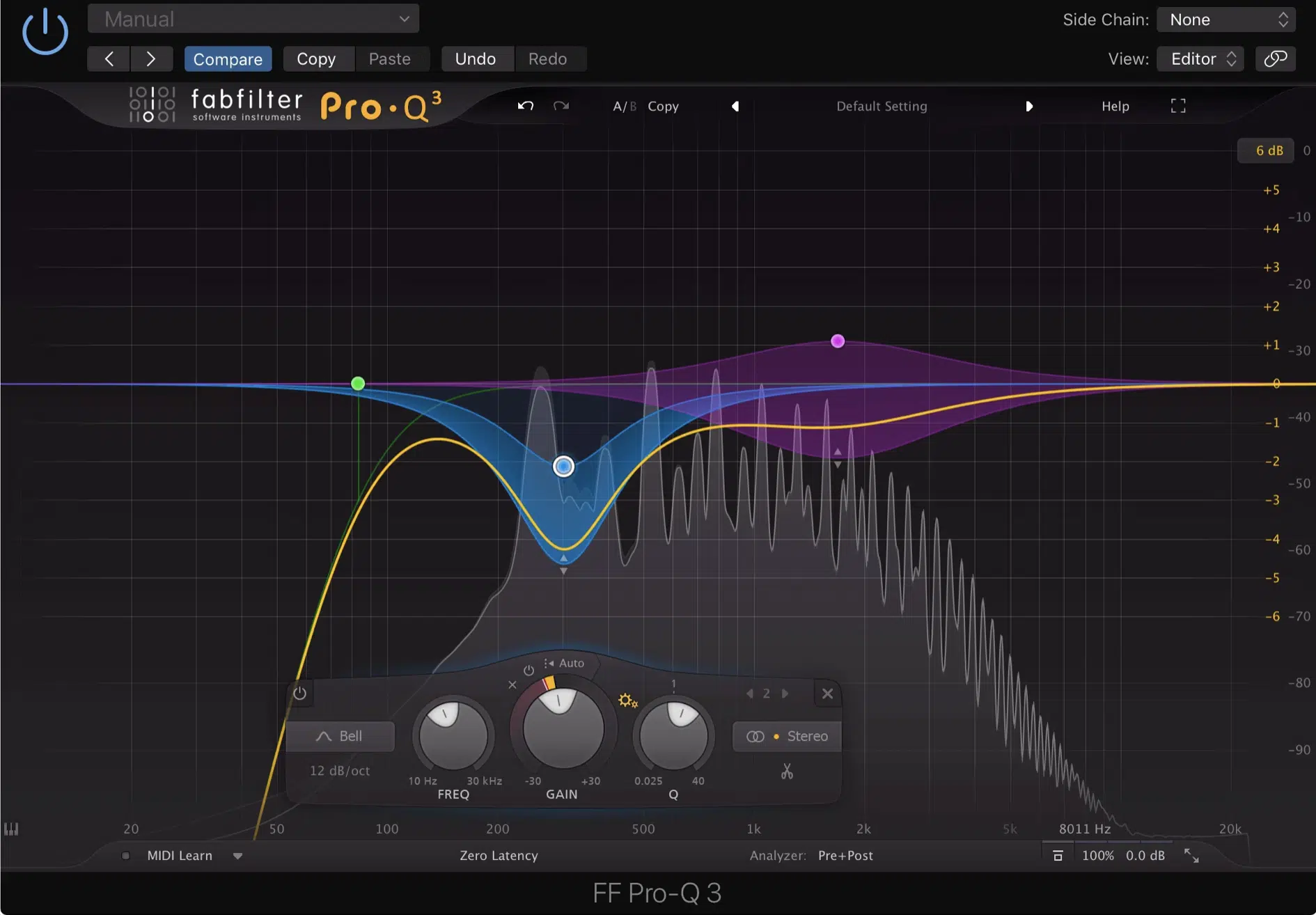
Dynamic EQs combine the features of a traditional EQ with the responsiveness of a compressor.
They allow you to apply EQ adjustments only when the input signal exceeds a certain threshold.
This makes them great for controlling resonances, sibilance, or other dynamic issues in a mix.
They’re particularly useful when dealing with problematic audio sources, such as vocals or drums, where you need to apply EQ only at specific moments in time.
Their ability to adapt to the input signal makes them a powerful tool for both corrective and creative EQ applications.
-
Graphic Equalizer

Graphic equalizers are a type of EQ that divides the frequency spectrum into a series of fixed bands, each with its own gain control.
They are often used where quick and straightforward adjustments are needed.
Graphic equalizers are less precise than Parametric EQs, but they can still be useful for broad tonal adjustments, such as adding warmth or ‘air’ to a mix.
Their intuitive user interface and fixed frequency bands make them a popular choice for those new to EQ’ing or working in time-sensitive situations.
-
Shelving EQ
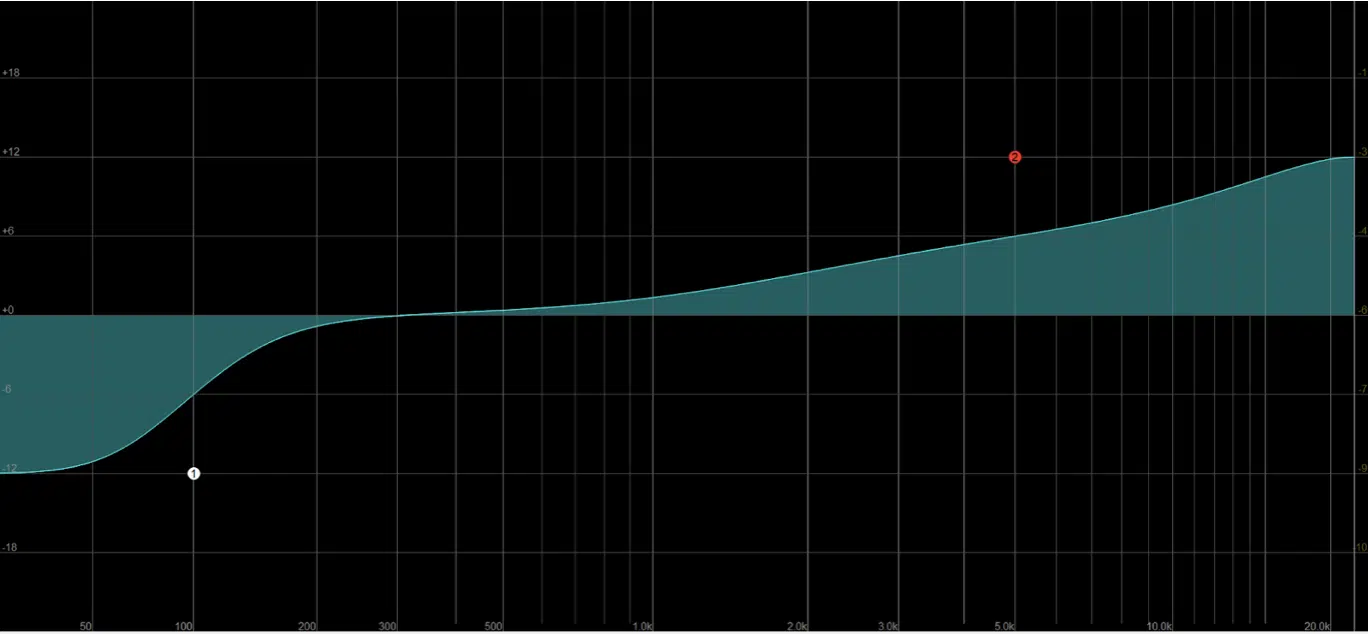
Shelving EQ is a type of EQ curve that provides a smooth, gradual boost or cut to a specified frequency range.
Shelving boosts can be used to enhance the low or high end of a mix, adding warmth, presence, or airiness to your tracks.
It’s essential to use shelving EQ judiciously, as overdoing it can result in an unbalanced or unnatural-sounding mix.
- Enhancing the low or high end of a mix
- Adding warmth, presence, or airiness
- Avoiding over-processing and maintaining a natural sound
Additive and Subtractive EQ
-
Additive EQ
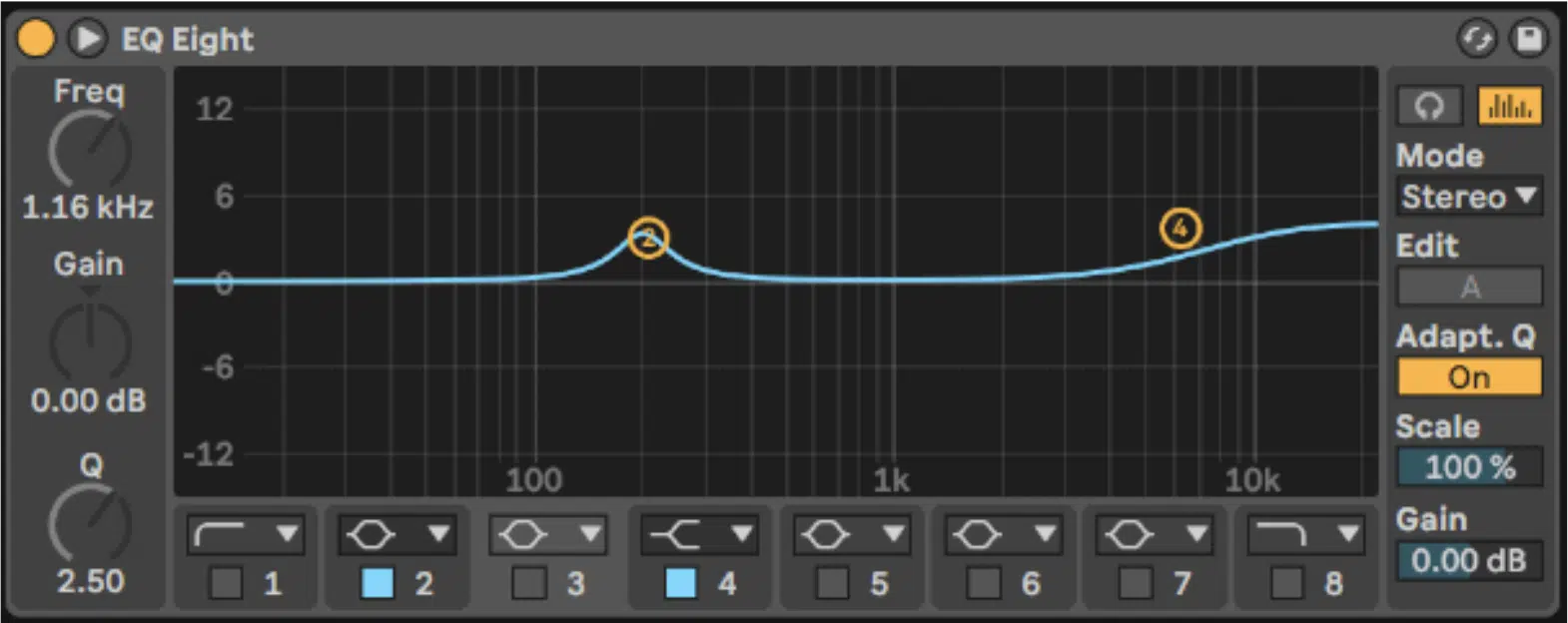
Additive EQ, also known as boosting, is the process of increasing the level of specific frequency bands to enhance certain characteristics or qualities of a sound, such as adding brightness, warmth, or presence.
It can help you emphasize the elements of a mix that you want to stand out or add character to individual tracks.
When using AEQ, it’s essential to be mindful of the overall balance of your mix and not overdo the boost.
Overusing it can lead to a cluttered and unnatural final product, and nobody wants that.
-
Subtractive EQ
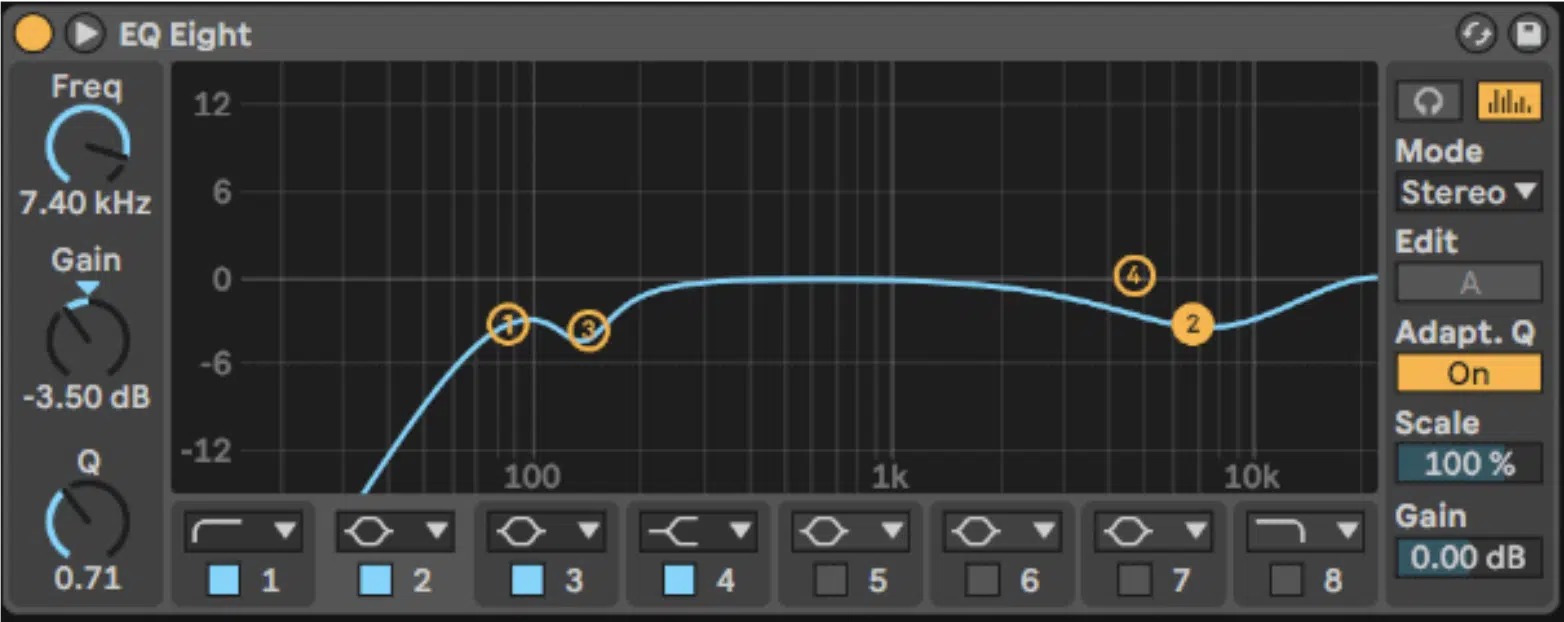
Subtractive EQ, often referred to as cutting, involves reducing the level of specific frequency bands to remove unwanted or problematic elements from a sound, such as harshness, muddiness, or resonances.
Subtractive EQ is a powerful tool for cleaning up a mix and creating space for other elements to shine through.
Subtractive EQ is generally considered a safer approach than additive EQ, as it’s less likely to introduce phase issues or negatively impact the overall balance of your mix.
By focusing on removing problematic frequencies rather than boosting desirable ones, you can achieve a cleaner, more balanced sound.
Linear Phase EQ and Phase Shift
-
Linear Phase EQ
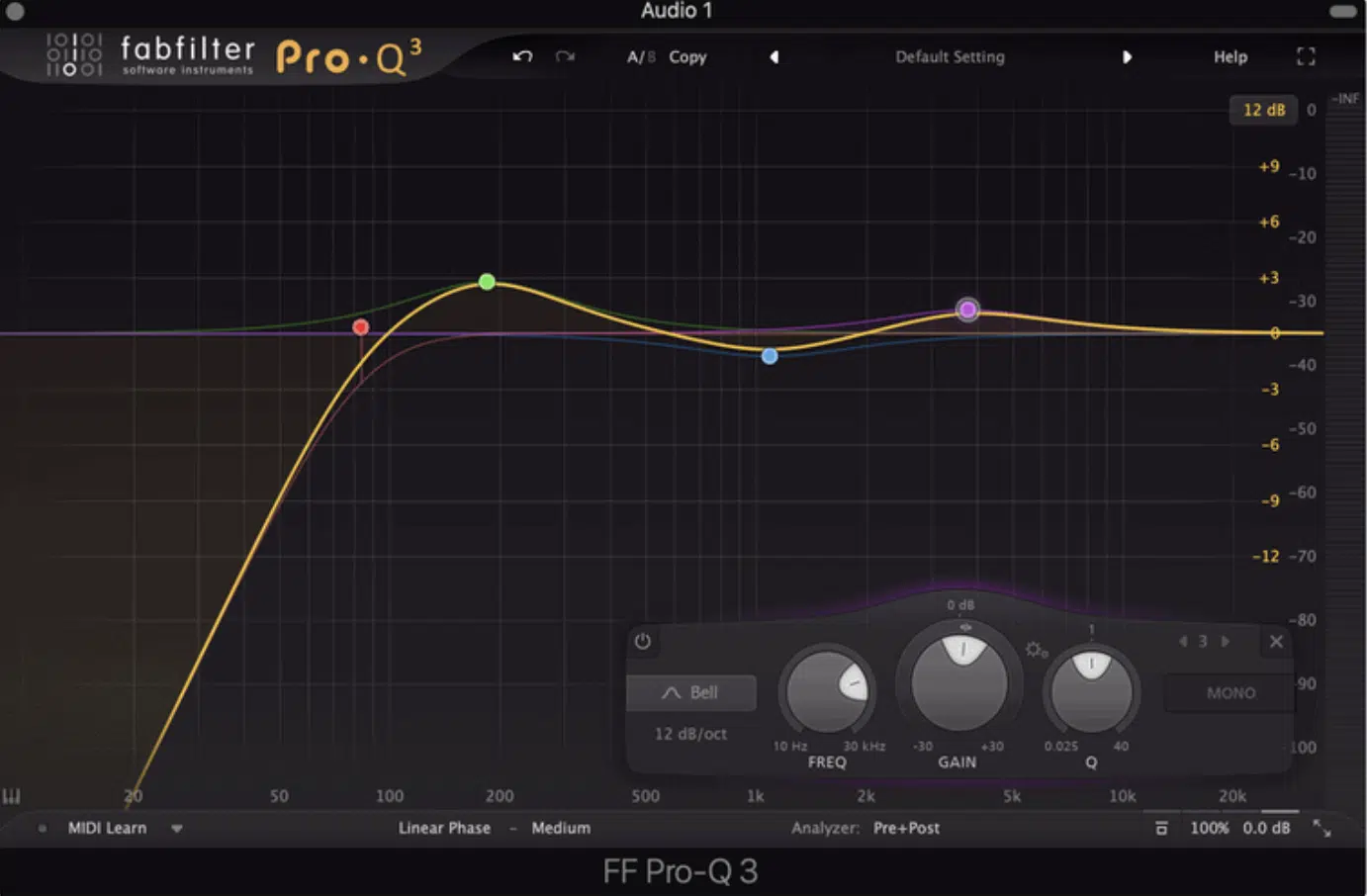
Linear Phase EQs are a type of EQ that doesn’t introduce phase shifts when processing audio.
This can be beneficial in certain situations where preserving the phase relationship between tracks is crucial, such as when working with multi-mic recordings or parallel processing.
However, Linear Phase EQs can introduce pre-ringing artifacts and typically have higher latency than their minimum-phase counterparts.
This makes them less suitable for real-time applications, such as live sound or tracking, but they’re still an invaluable tool for mixing and mastering.
-
Phase Shift
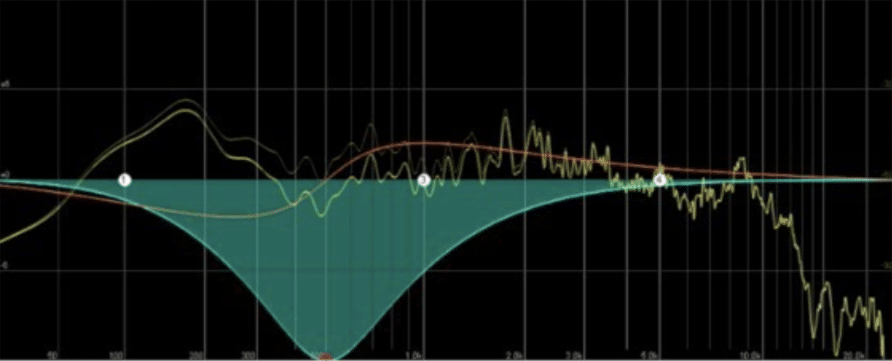
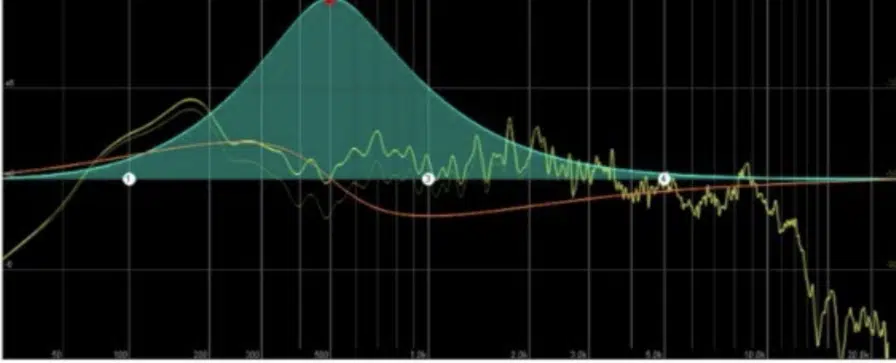
Phase shift is a phenomenon that occurs when an audio signal is processed through an EQ or other time-based processing device.
It can cause the phase relationship between different frequencies to change, potentially leading to phase cancellation or other undesirable artifacts.
The phase shift can be particularly problematic when combining tracks that have been processed with different EQs or when using EQ in parallel processing setups.
To avoid phase issues, it’s essential to be aware of the potential consequences of phase shifts and to use tools such as linear phase EQs or phase alignment plugins when necessary.
The 12 Best EQ Plugins of 2023
Now the part you’ve all been waiting for… the 12 best EQ plugins in the game right now that you need in your toolkit.
We’ve chosen these plugins based on their sound quality, versatility, flexibility, unique features, and the best audio interface.
So, without further ado, let’s dive in!
#1. The Best All-Around EQ Plugin: Sound Doctor
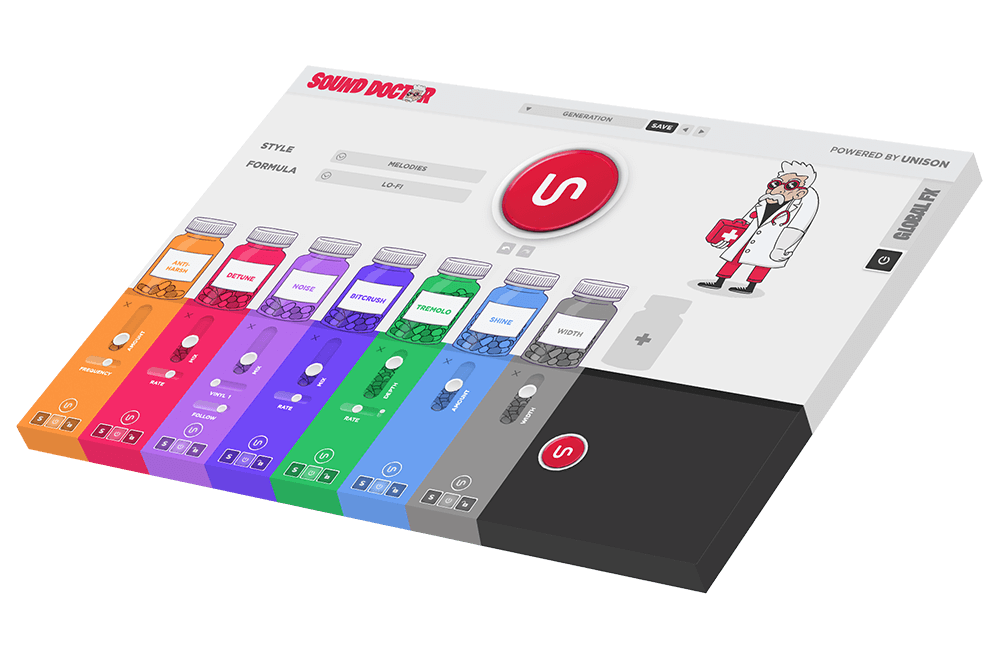
Sound Doctor by Unison Audio is a super versatile and insanely powerful plugin that’s perfect for tackling any mixing task.
Its sleek user interface and intuitive controls make it easy to use, while its advanced features ensure that you have all the tools you need to achieve the perfect mix.
This all-around champion is suitable for both beginners and experienced music producers, offering a comprehensive set of tools for any EQ-related task.
Sound Doctor features 8 fully customizable EQ bands, each with a wide range of filter types 一 including high-pass, low-pass, band-pass, notch, and various shelving and bell shapes.
It also boasts Linear Phase and Minimum Phase music modes, letting you choose between pristine sound quality with zero phase shift or a more analog-like response with minimal latency.
One of the standout features of Sound Doctor is its Mid/Side processing capability.
This advanced feature allows you to independently adjust the EQ for the mid (mono) and side (stereo) components of your audio, providing even greater control over your mix’s spatial balance.
This can be particularly useful when trying to achieve a wide, immersive mix or when addressing specific issues in the stereo field.
Standout Features:
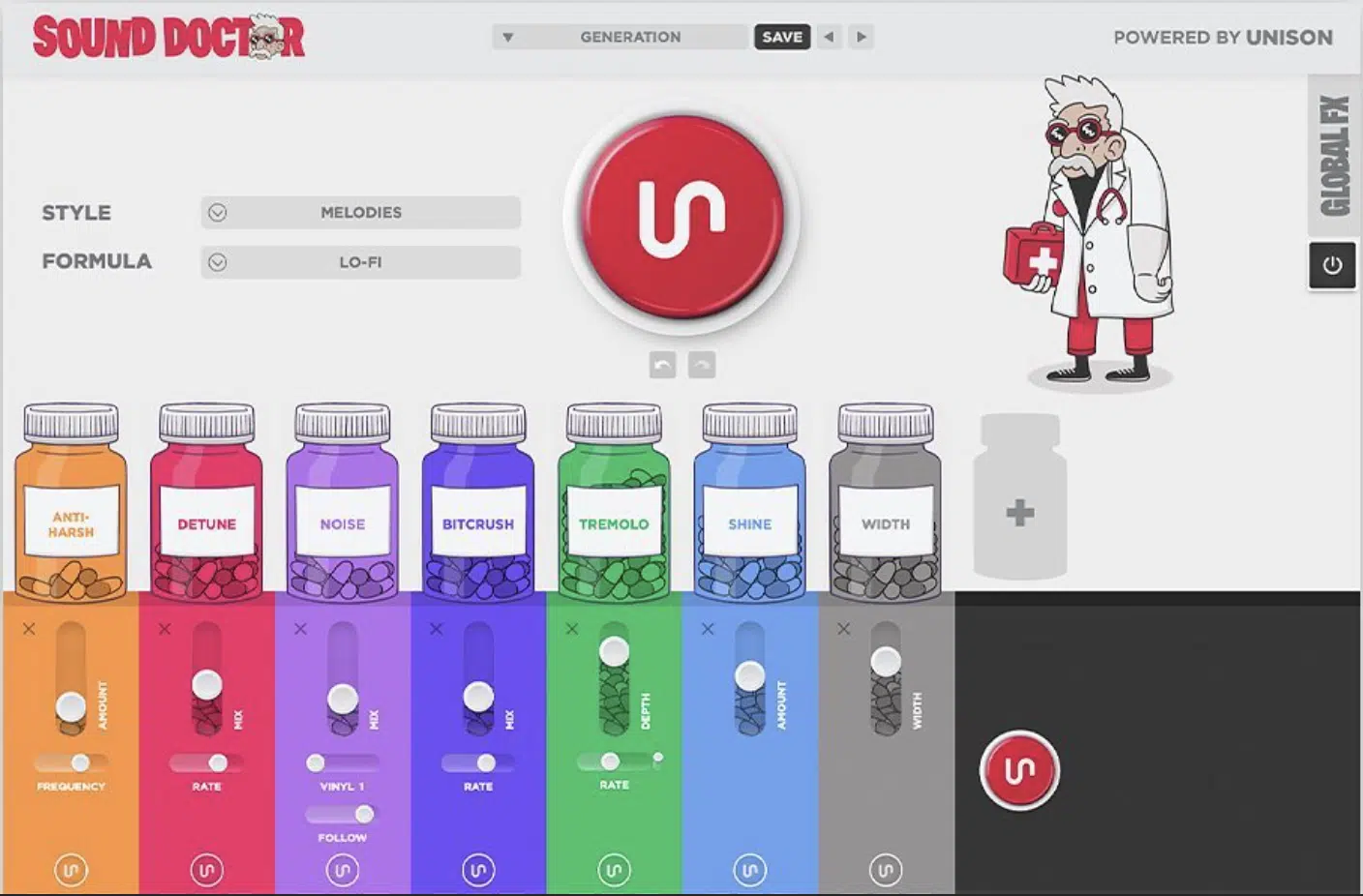
- Unique 3D frequency visualization
- Customizable user interface with resizable and detachable panels
- Advanced AI-assisted EQ recommendations
- Presets designed by industry professionals
- Precise surgical EQ capabilities
- Linear phase and minimum phase modes
- Mid-side processing for enhanced stereo imaging
- Integrated spectrum analyzer and ignite amps
Pro Tip
One unconventional yet powerful technique you can try with Sound Doctor is parallel processing.
This involves duplicating your audio track, applying EQ adjustments to one track, and blending it with the original, unprocessed track.
This way, you can make dramatic EQ changes while maintaining the natural character of your sound.
For example, you might apply a high-pass filter to the duplicated track to emphasize the high frequencies, then blend it with the original track to retain the low-end energy.
This technique allows you to achieve a unique eq match and texture in your mix.
By incorporating Sound Doctor into your plugin collection, you’ll have access to a versatile and powerful EQ solution that can handle a wide range of music production tasks.
Experiment with its features and capabilities to find the perfect sound for your projects.
#2. The Best Parametric EQ Plugin: Fabfilter Pro-Q3
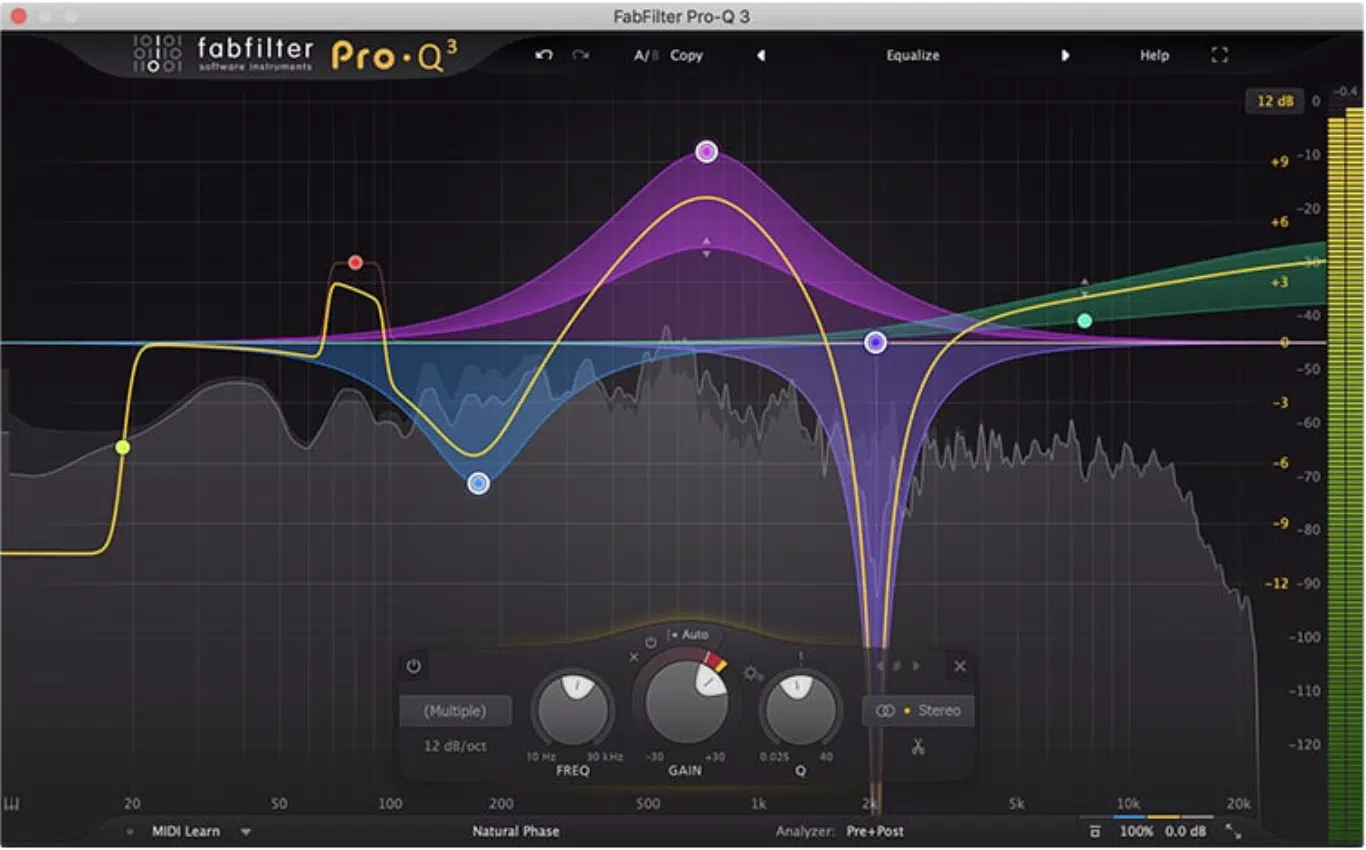
FabFilter Pro-Q3 is a parametric EQ powerhouse that has been a go-to choice for many music producers and audio engineers for years.
Known for its pristine sound quality, flexible features, and user-friendly interface, it delivers exceptional results in a wide range of applications 一 from surgical EQ adjustments to creative sound design.
Fabfilter Pro-Q3 boasts an impressive set of features that cater to both beginner and advanced users.
Its highly intuitive interface allows you to create and adjust up to 24 bands with ease, each offering a wide selection of filters.
The resizable interface also provides real-time spectral analysis, helping you visualize your audio and make more informed EQ decisions.
One standout feature of the Pro-Q3 is its Dynamic EQ mode, available for each band.
This mode allows the plugin to automatically adjust the gain of specific bands based on the input signal level.
This can be especially useful for a dynamic resonance suppressor or harsh frequencies in vocals or other instruments without affecting the overall tonality.
Another advanced feature of the Fabfilter Pro Q 3 is its Mid/Side and Left/Right processing capabilities, offering independent EQ control over the mid, side, left, and right channels of your audio.
This level of control allows you to sculpt your mix’s spatial balance with precision, achieving a more polished and professional sound.
Standout Features:
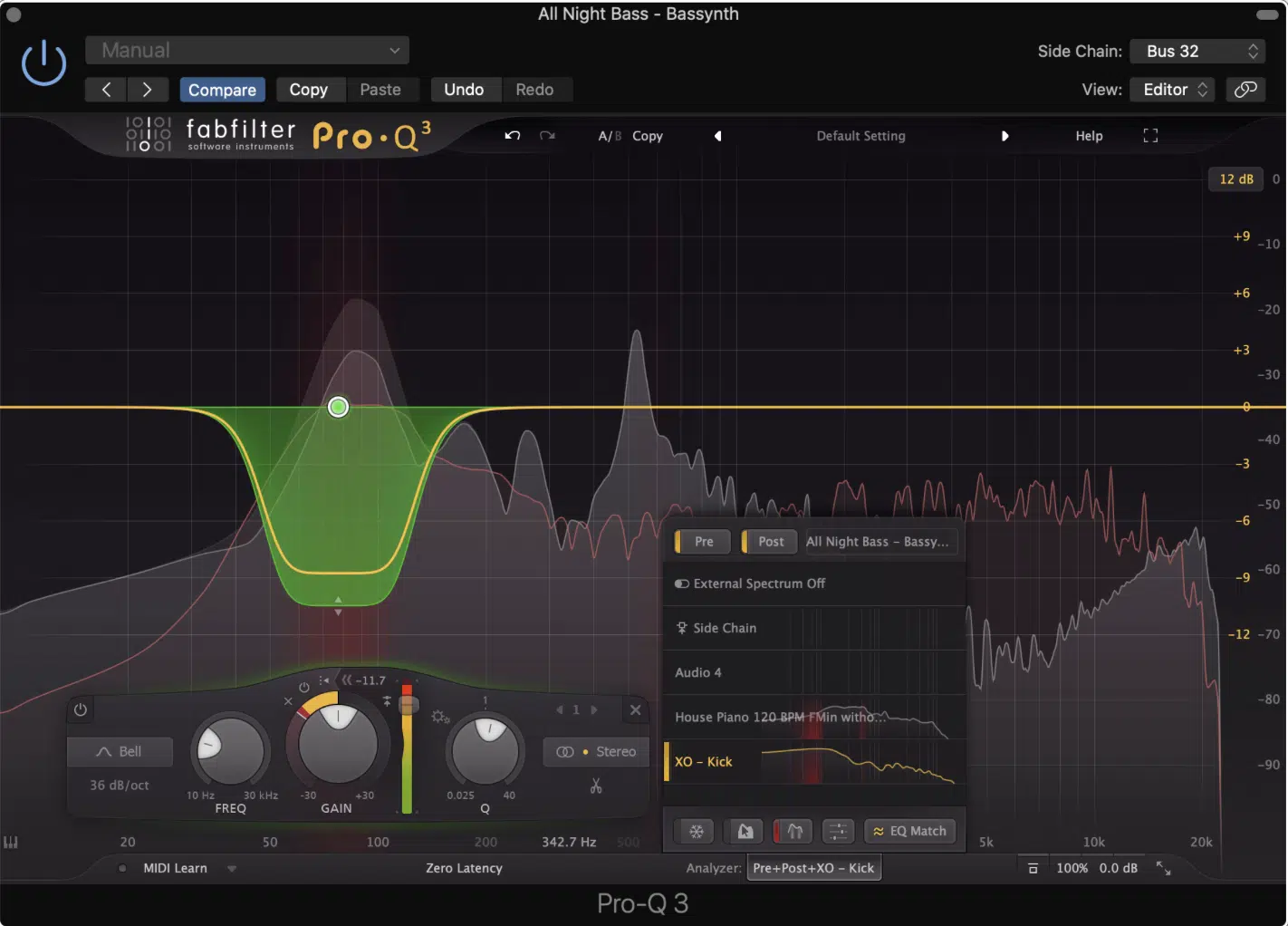
- Up to 24 bands with various filter types
- Dynamic EQ mode for each band
- Mid/Side and Left/Right processing
- Real-time spectrum analyzer
- Resizable interface with full-screen mode
Pro Tip
Use the dynamic mode to control resonances on a track without affecting the overall tonal balance.
For example, you could set a dynamic band to reduce the level of a snare drum’s ringing frequency only when it’s prominent, maintaining the natural character of the snare when the ringing isn’t an issue.
#3. Best Vintage EQ Plugin: PuigTec EQs by Waves
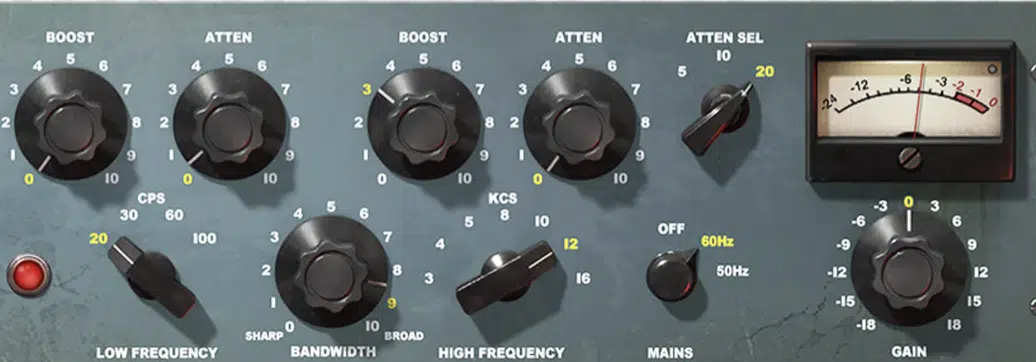
The PuigTec EQs by Waves is a collection of two vintage eq plugins, the PuigTec EQP-1A, and the PuigTec MEQ-5.
Both are meticulously modeled after the legendary Pultec EQ hardware units.
These two plugins are renowned for their ability to add warmth, richness, and character to your audio while maintaining the original hardware’s signature sound.
- The PuigTec EQP-1A 一 Tube-based program equalizer excels in broad tonal adjustments, such as adding low-end warmth or high-end air to your mix.
- The PuigTec MEQ-5 一 Focuses on the midrange frequencies, offering a three-band equalizer for precise control over the critical midrange area.
Aside from offering two vintage EQs in one package, these EQs capture the warm, musical character and unique nonlinearities of the original Pultec hardware.
Standout Features:

- Meticulously modeled after the legendary Pultec EQs
- Unique boost and cut functionality for a resonant shelf effect
- Tube-based program equalizer for analog warmth
- Three-band midrange equalizer for precision control
Pro Tip
Use the PuigTec EQs to add low-end warmth to a kick drum by simultaneously boosting and cutting the same low-frequency band.
This creates a resonant shelf that emphasizes the fundamental frequency of the kick drum while still maintaining tightness and control.
#4. Best Free EQ Plugin: TDR Nova
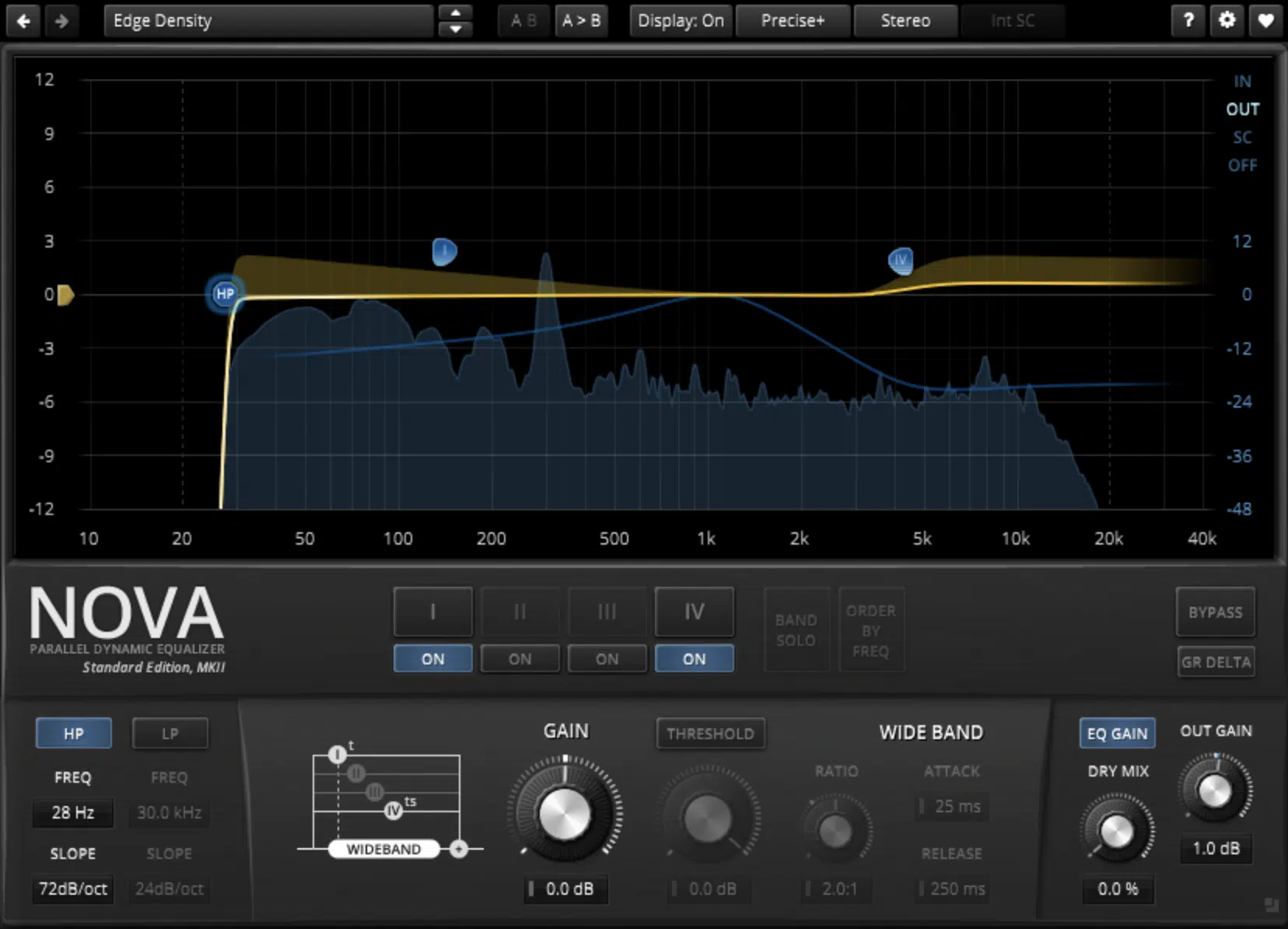
TDR Nova is a versatile equalizer plugin that combines the best of parametric EQ and dynamic processing in a single, user-friendly interface.
With its powerful feature set and transparent sound, TDR Nova is an excellent choice for both corrective and creative EQ tasks, all for free.
Free eq plugins usually don’t come this advanced, but this one sure does.
It features four fully adjustable EQ bands, each with a variety of filter types, including high-pass, low-pass, band-pass, notch, and various shelving and bell shapes.
Additionally, each band can be independently set to operate as a dynamic EQ, allowing you to make precise frequency adjustments that respond to the input signal level.
TDR Nova also includes a high-pass and low-pass filter, a real-time spectrum analyzer, and a customizable output limiter, providing a comprehensive set of tools for shaping your mix’s tonal balance.
Standout Features:

- Four fully adjustable EQ bands
- Variety of filter types for precise control
- Independent dynamic behavior for each band
- Real-time spectrum analyzer
- Customizable output limiter
Pro Tip
Utilize TDR Nova’s dynamic EQ mode to control harshness in a vocal recording.
Set a band to target the problematic frequency range, and adjust the threshold and ratio to reduce the harshness only when it’s most prominent.
This will help maintain the vocal’s natural character while preventing it from becoming overly harsh.
#5. Best EQ for Air and Clarity: Eiosis AirEQ by Slate Digital
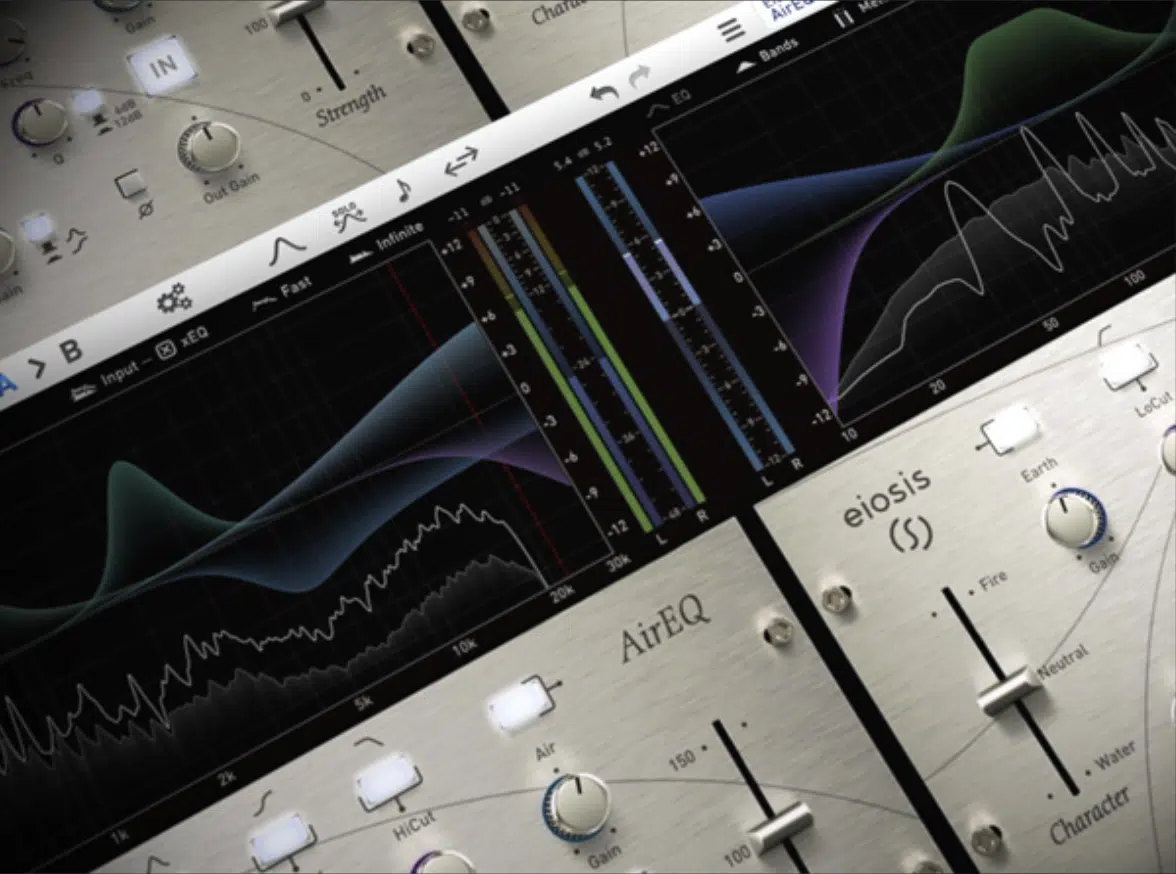
Eiosis AirEQ is an innovative equalizer plugin designed to provide unparalleled clarity and transparency in your mixes.
With its unique Air and Earth bands, Eiosis AirEQ lets you add an extra dimension to your audio, enhancing the overall mix with precision and ease.
The AirBand in the AirEQ is specifically designed to add brilliance and sheen to your audio without introducing harshness.
This powerful feature can breathe life into dull-sounding recordings or help accentuate the top-end of vocals, drums, and other instruments.
The Earth band, on the other hand, focuses on the lower frequency range, offering a smooth, musical boost or cut that can add warmth, body, and presence to your mix.
This versatile tool is perfect for addressing low-end issues or adding weight to thin-sounding tracks.
Standout Features:

- Unique Airband for adding clarity and openness
- Earth band for controlling low-end weight and warmth
- Intuitive and easy-to-use interface
It’s also Ideal for audio mastering applications.
Pro Tip
Use the AirEQ’s Airband to add a sense of space and depth to your mix during the mastering stage.
This can help give your final mix a polished, professional sound that translates well across various playback systems.
Be careful not to overdo the effect, as too much air can make your mix sound overly bright or harsh.
#6. Best Hybrid EQ Plugin: H-EQ Hybrid Equalizer by Waves Plugins
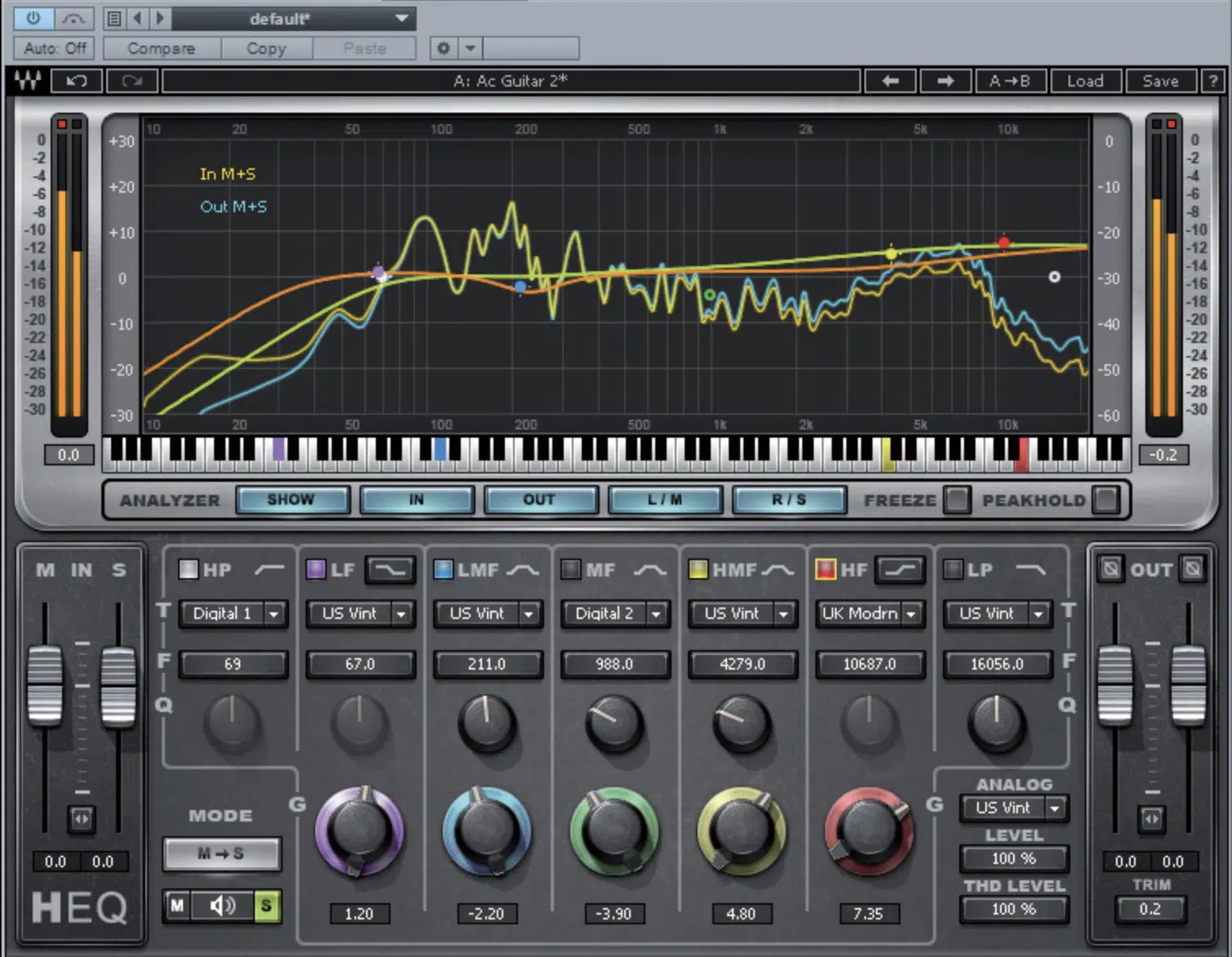
The H-EQ Hybrid Equalizer by Waves Plugins is a powerful and versatile EQ plugin that combines the best features of vintage and modern equalizers.
With its unique blend of analog warmth and digital precision, the H-EQ is perfect for mixing music and mastering music.
The H-EQ offers seven fully customizable bands, each with a choice of five different filter types, including vintage-inspired filters modeled after classic hardware units.
It also features a flexible real-time spectrum analyzer, providing visual feedback that can help you make informed decisions when adjusting the EQ.
The vintage-inspired filters are modeled after renowned hardware units such as the Pultec EQP-1A, Neve 1073, and SSL G-Series.
These filters provide the distinct sound characteristics of their respective hardware counterparts, allowing you to achieve a wide range of tonal colors and flavors.
Additionally, this unique plugin offers modern, surgical filters for precise frequency adjustments.
Standout Features:
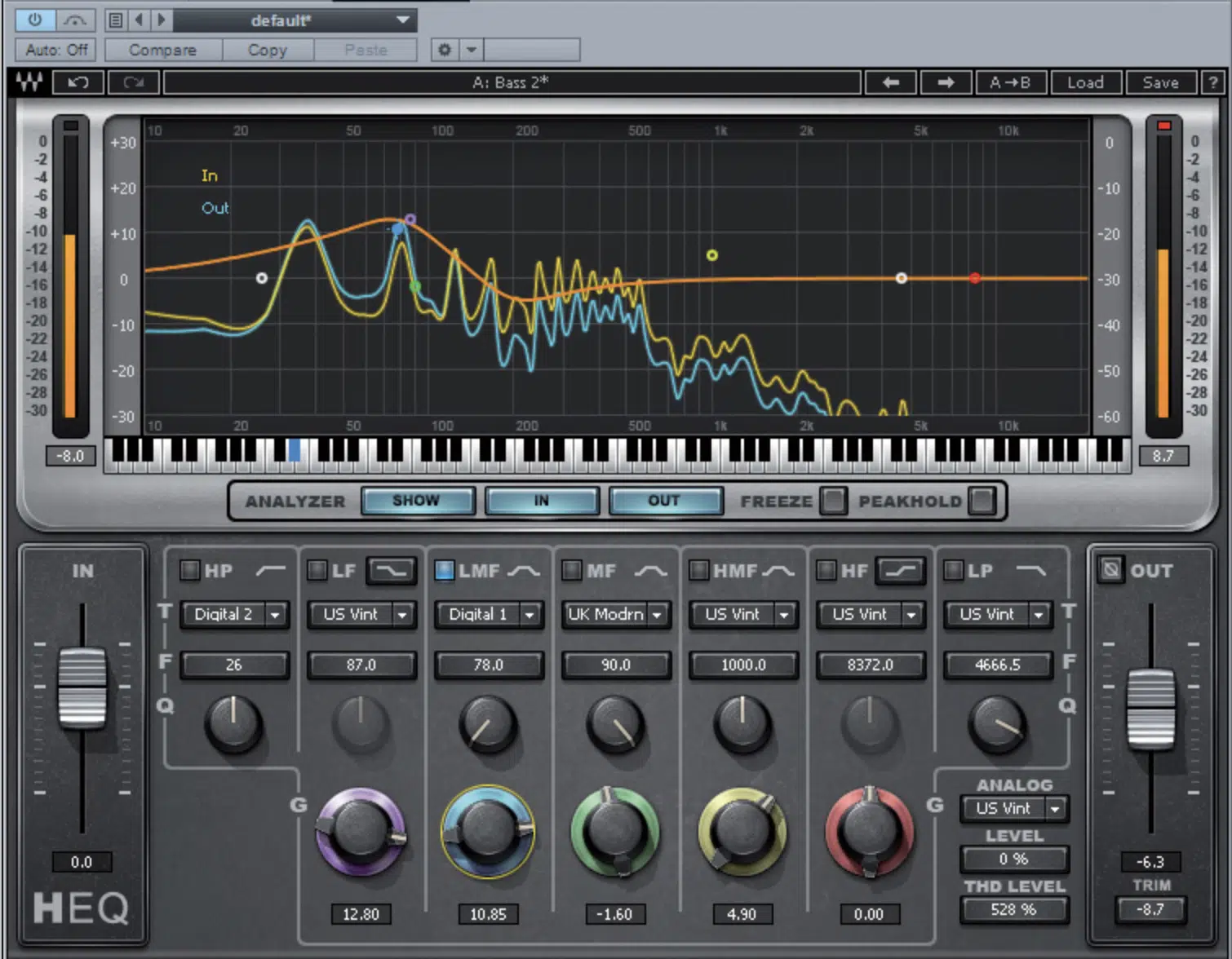
- Vintage and modern EQ styles combined
- Seven fully customizable bands
- Five filter types per band, including vintage-inspired filters
- Real-time frequency analyzer
Pro Tip
Use the H-EQ’s vintage-inspired filters to add warmth and character to your mix.
For example, apply a gentle low-end boost using the Pultec EQP-1A filter to enhance the bass and kick drum, or add some presence to your vocals using the Neve 1073 filter.
#7. Best AI-Powered EQ Plugin: smart:EQ 3 by Sonible
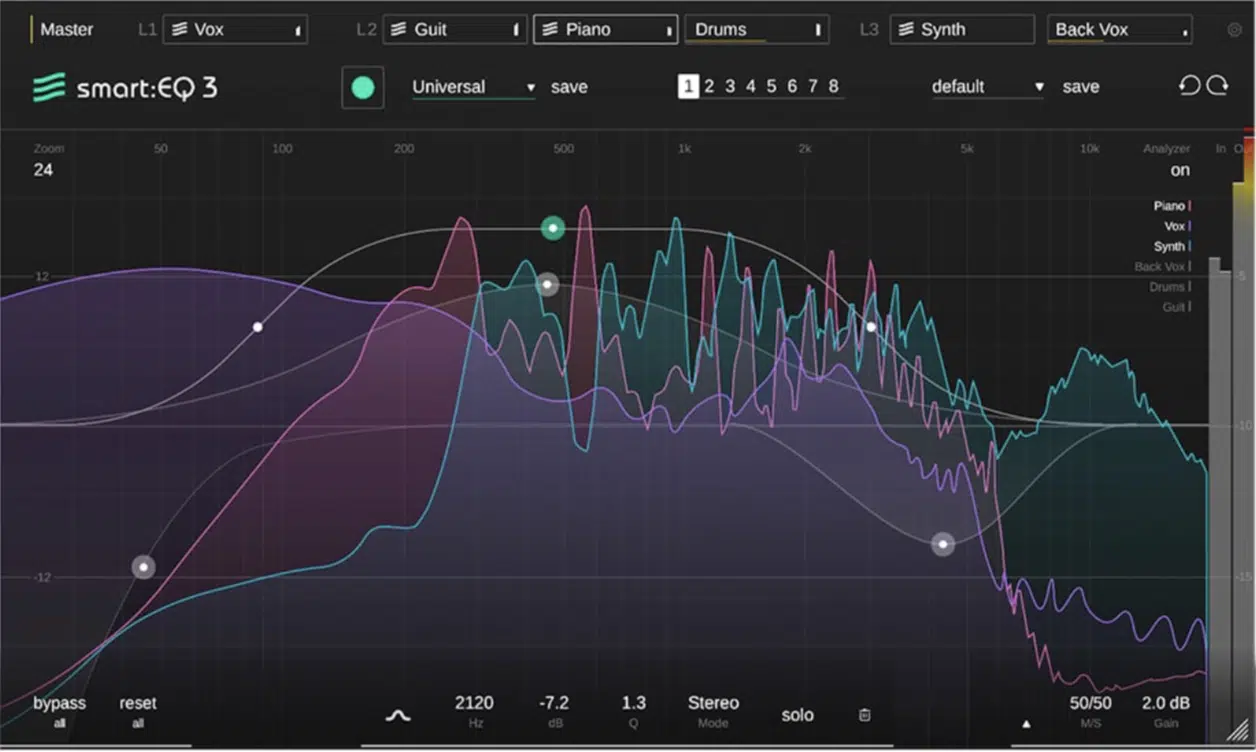
smart:EQ 3 by Sonible is a groundbreaking equalizer plugin that uses artificial intelligence to analyze and automatically adjust the EQ of your audio, helping you achieve a balanced mix quickly and efficiently.
This innovative plugin is ideal for those who want a fast and accurate solution for tackling EQ-related issues without sacrificing control or flexibility.
smart:EQ 3 features an intuitive interface with eight fully adjustable bands, each with seven filter types.
Additionally, this unique plugin offers an innovative “smart” band, which uses AI-driven algorithms to identify and correct frequency imbalances in your mix automatically.
Standout Features:
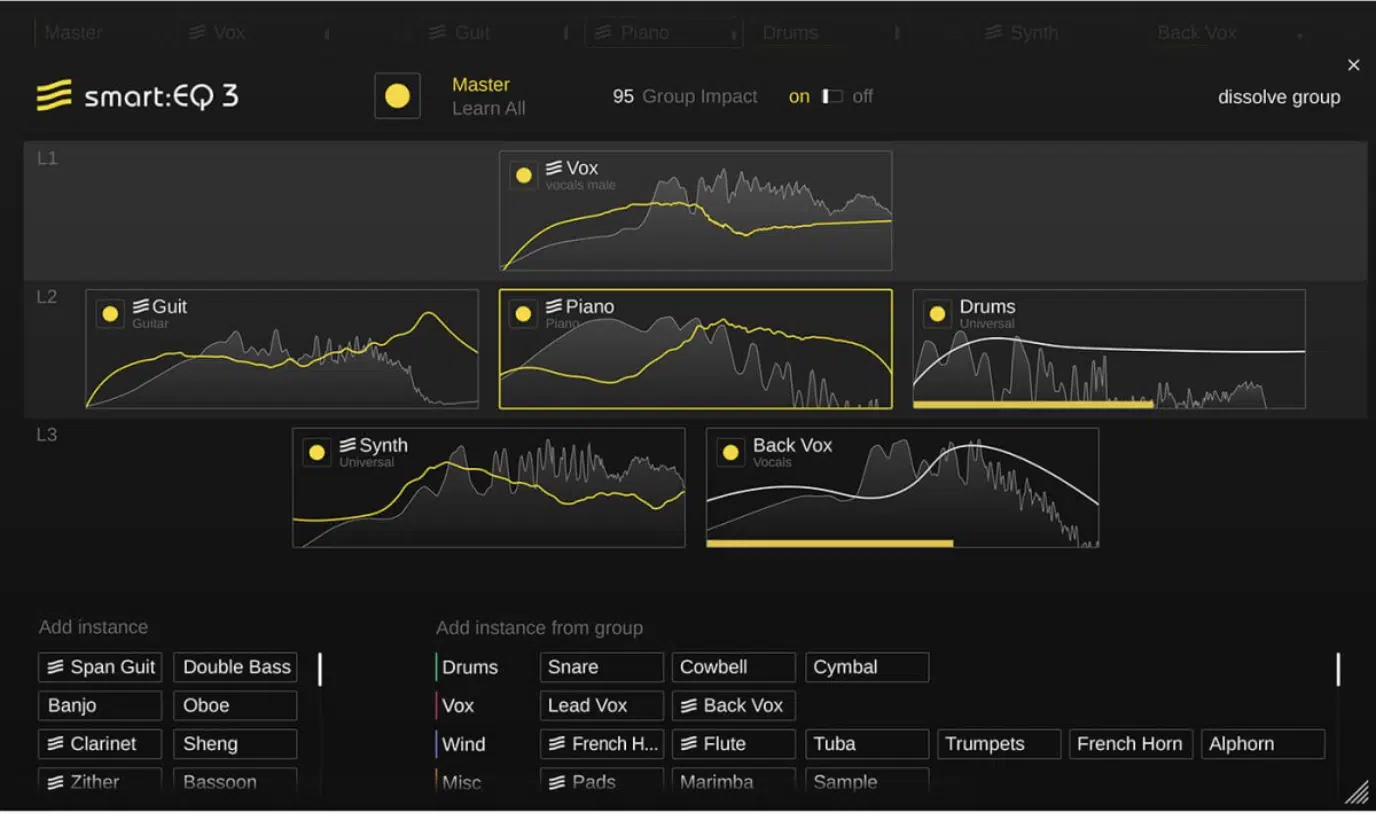
- AI-driven smart band for automatic EQ adjustments
- Eight fully customizable bands
- Variety of filter types for precise control
- Group functionality for processing multiple tracks simultaneously
Pro Tip
Use the smart:EQ 3’s Group functionality to balance the tonality of a group of similar instruments, such as a multi-mic drum kit or a layered synth section.
By analyzing and processing these tracks simultaneously, it can help you achieve a cohesive and balanced sound that sits well in your mix.
#8. Best EQ for Adding Character: Mäag Audio EQ4

The Mäag Audio EQ4 is a unique equalizer plugin that’s renowned for its exceptional AirBand, which can add unparalleled clarity, presence, and sheen to your audio.
With its simple yet powerful design, the EQ4 is perfect for adding that extra touch of polish to your mix.
The EQ4 features six fixed-frequency bands, each with a dedicated gain control.
These bands were carefully chosen to cover the most critical areas of the frequency spectrum, allowing you to make impactful adjustments with ease.
The standout feature, the AirBand, offers a high-frequency shelf that can be set at:
- 2.5 kHz
- 5 kHz
- 10 kHz
- 20 kHz
- 40 kHz
Therefore, providing a gentle and musical boost to the upper frequencies.
Standout Features:
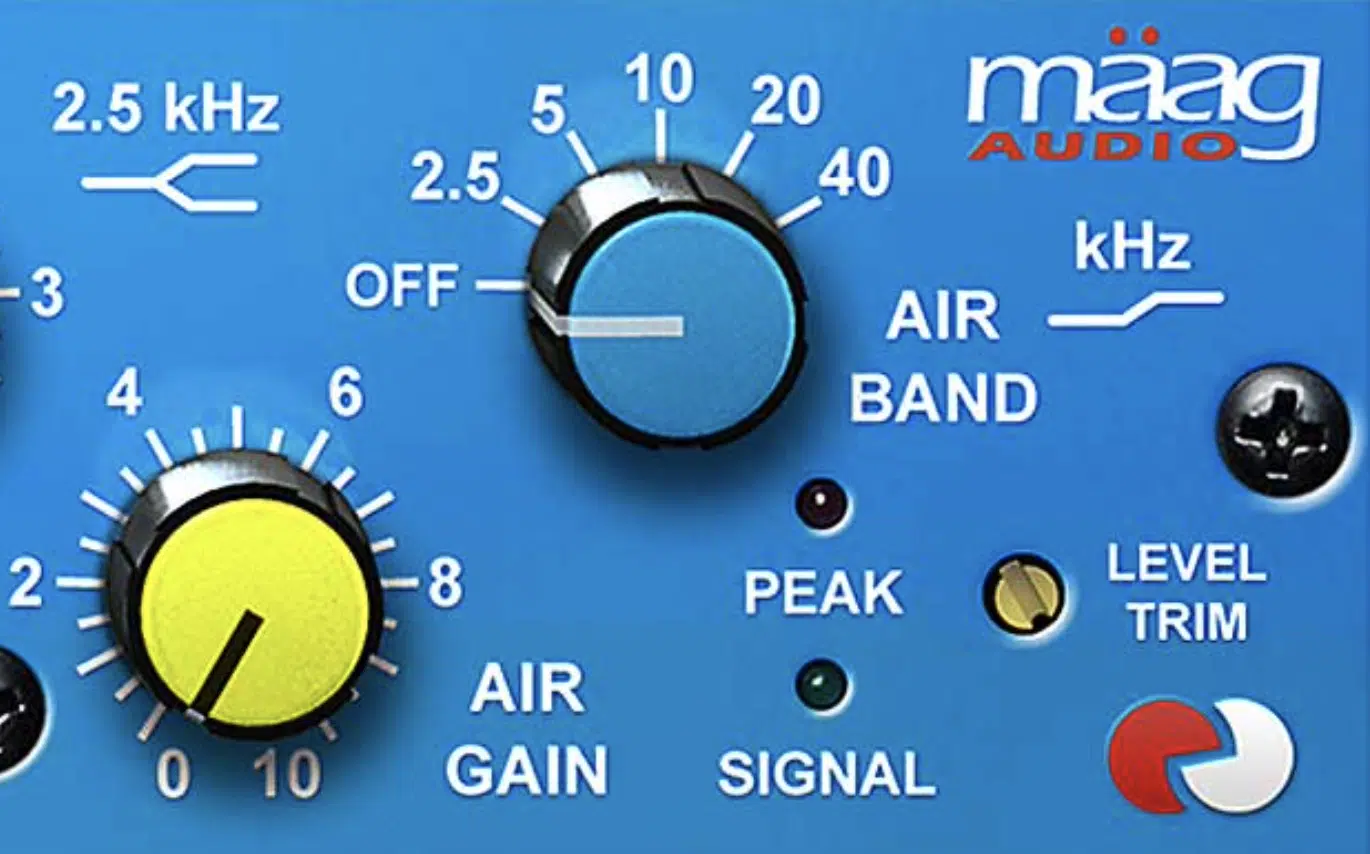
- Exceptional Air Band for enhanced clarity and sheen
- Six fixed-frequency bands for straightforward operation
- Carefully chosen frequency bands for impactful adjustments
- Musical and transparent sound quality
Pro Tip
Use the Mäag Audio EQ4’s Air Band to add clarity and presence to your lead vocals.
By boosting the high frequencies with the Air Band set to 20 kHz or 40 kHz, you can enhance the sense of space and airiness in your mix without introducing harshness or sibilance.
#9. Best Hardware Replica EQ Plugin: Waves API Collection
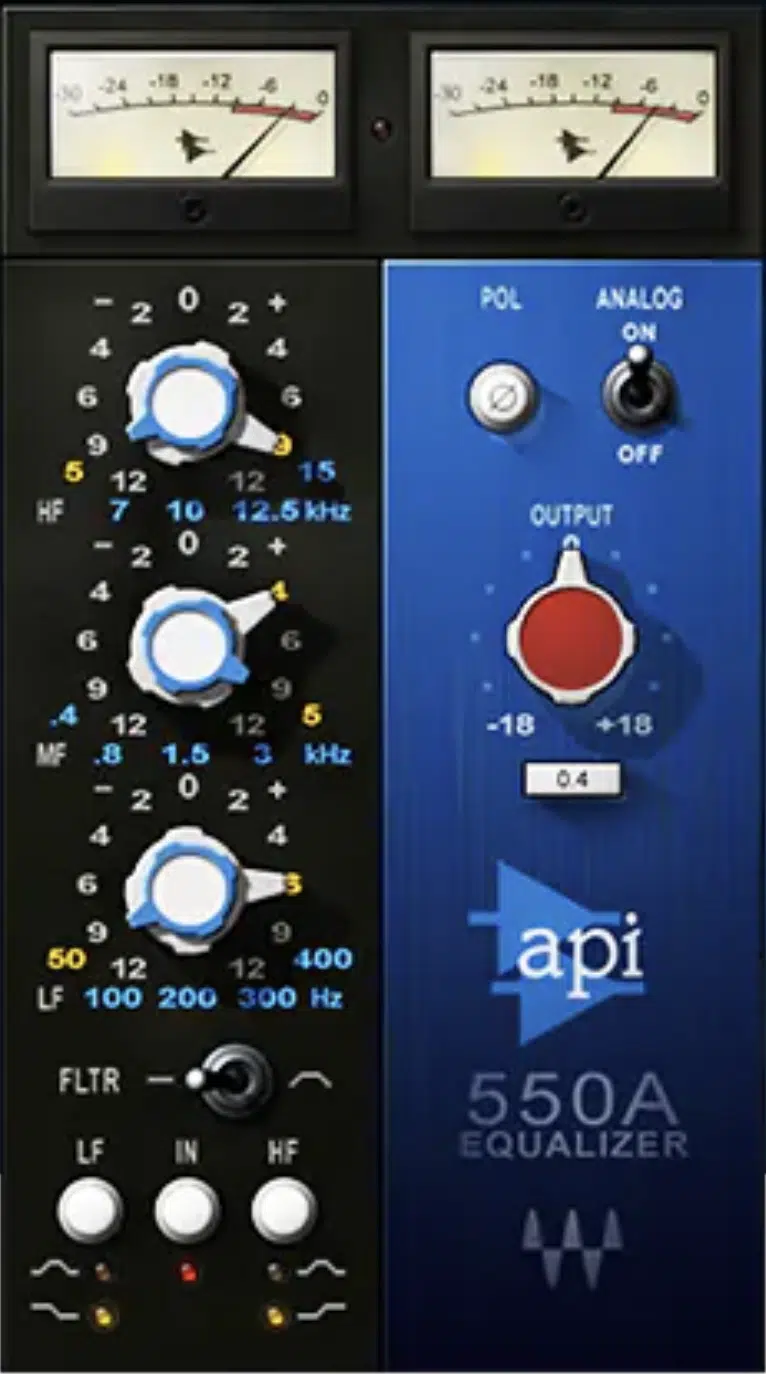
The Waves API Collection is a bundle of the four best EQ plugins modeled after the legendary API hardware units, known for their distinctive API sound.
This collection includes the API 550A, API 550B, API 560, and API 2500, each offering unique features and characteristics:
- The API 550A and API 550B 一 Three-band and four-band equalizers, respectively, feature proportional-Q and reciprocal controls for smooth and musical adjustments. These plugins excel at adding presence and character to vocals, drums, and other instruments.
- The API 560 一 A ten-band graphic equalizer with a unique range control that allows you to adjust the overall gain of the plugin without altering the individual band settings. This feature makes it easy to add subtle tonal shaping or dramatic EQ adjustments to your mix.
- The API 2500 is 一 A stereo bus compressor with a versatile EQ sidechain, perfect for adding punch and glue to your mix. It’s distinctive sound and flexible controls make it an invaluable tool for mastering and Mix Bus Processing.
It also boasts an authentic analog character, and rich harmonic tones, faithfully emulating the sought-after sound of the original hardware units used in countless hit records.
Standout Features:
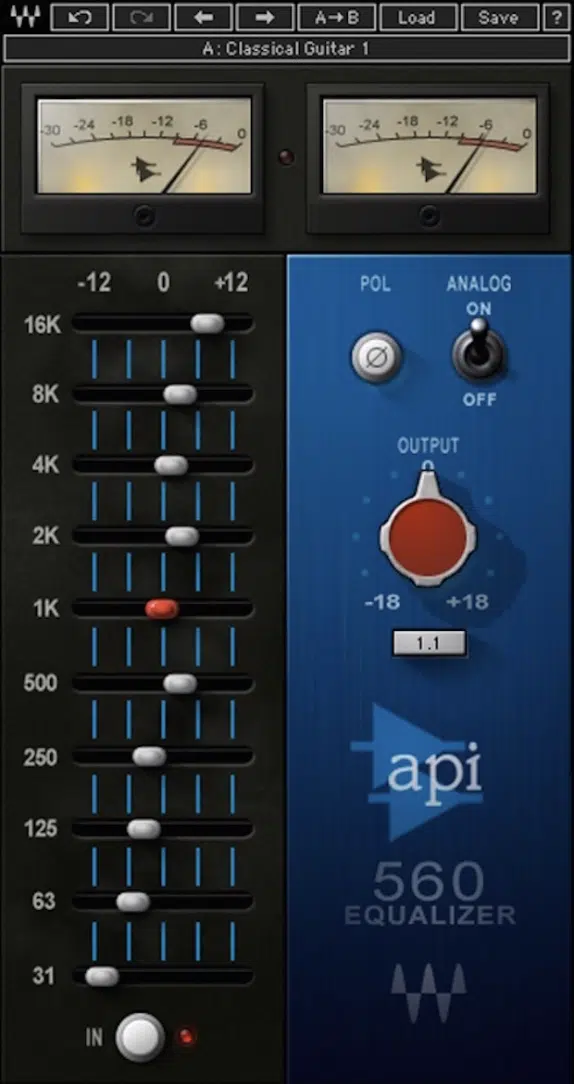
- Modeled after the legendary API hardware units
- Distinctive American sound
- API 550A and API 550B for smooth and musical EQ adjustments
- API 560 for graphic equalization and flexible gain control
- API 2500 for versatile bus compression and EQ sidechain
Pro Tip
Use the Waves API 550A or API 550B to enhance the presence and character of your snare drum.
By applying a gentle boost in the 3 kHz to 5 kHz range, you can add snap and clarity to your snare, helping it cut through the mix without overpowering other elements.
#10. Best Harmonious EQ Plugin: Soundtoys Sie-Q

Sie-Q by Soundtoys is a vintage-style equalizer plugin inspired by the classic Siemens W295b hardware unit.
Known for its smooth, musical sound and ease of use, Sie-Q is an excellent choice for those looking to add character and warmth to their mixes.
The Sie-Q plugin features three fixed-frequency bands for high, mid, and low adjustments, as well as a high-pass filter for controlling low-end rumble.
Each band offers a unique and musical response, making it easy to shape the tone and character of your mix with just a few simple tweaks.
One of the standout features of Sie-Q is its Drive control, which emulates the subtle harmonic distortion found in the original hardware unit.
By adding a touch of Drive, you can infuse your mix with warmth and saturation, reminiscent of the classic analog gear.
Standout Features:
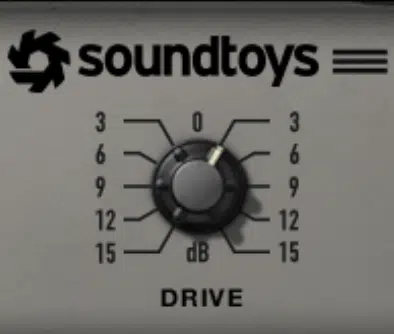
- Inspired by the classic Siemens W295b hardware unit
- Three fixed-frequency bands for simple and musical EQ adjustments
- High-pass filter for controlling low-end rumble
- Drive control for subtle harmonic distortion
Pro Tip
Use the Sie-Q’s Drive control to add warmth and saturation to your drum bus.
By applying a moderate amount of Drive, you can create a cohesive and punchy drum sound that sits well within your mix.
NOTE: If you’re looking for the best saturation plugins of 2023, look no further.
#11. Best Adaptive EQ Plugin: Waves F6 Floating-Band Dynamic EQ
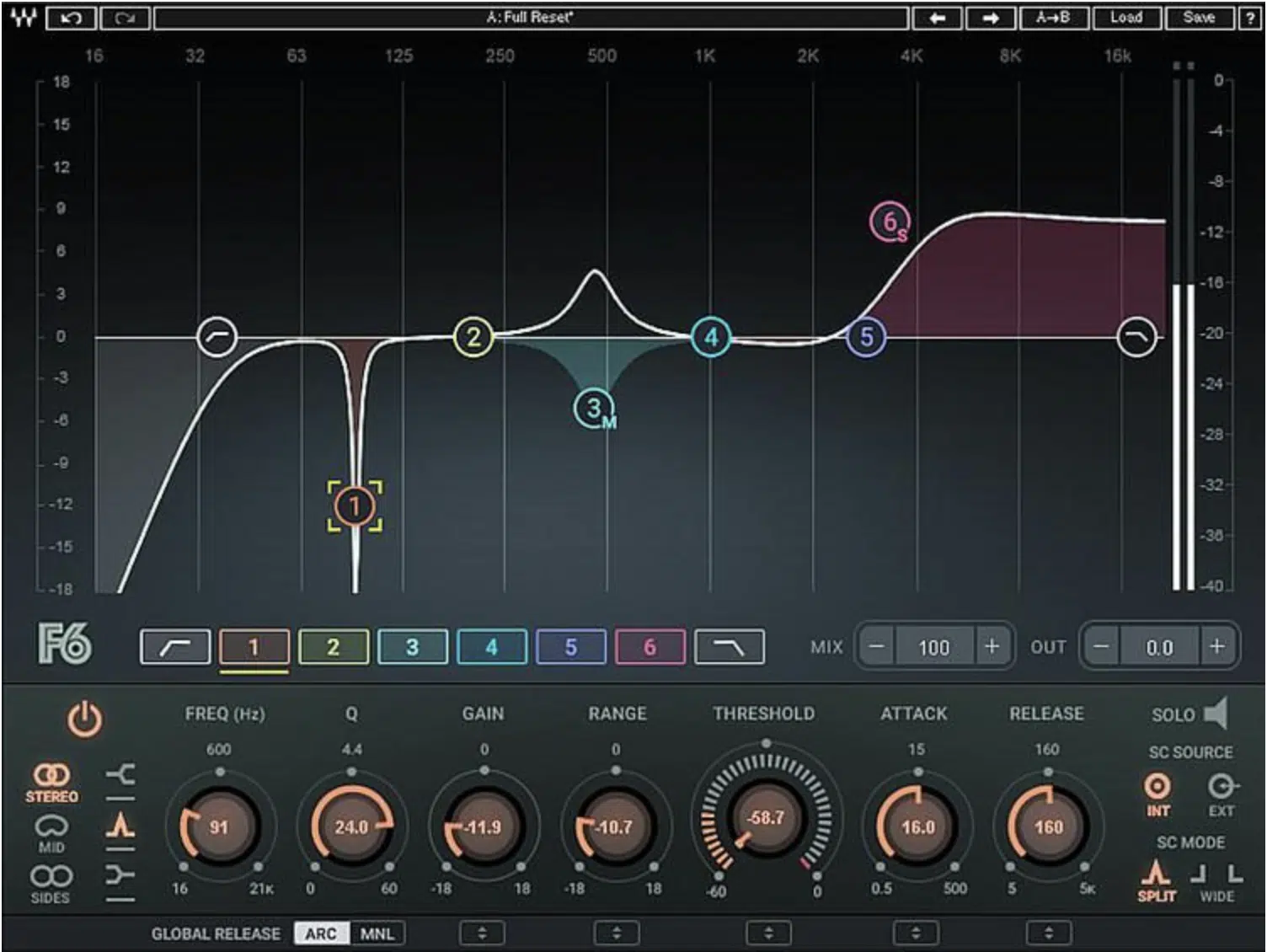
The Waves F6 Floating-Band Dynamics EQ is a versatile and powerful equalizer plugin that combines the precision of parametric EQ with the adaptability of dynamic processing.
With its unique floating-band design, the F6, similar to Universal Audio, offers unprecedented control over your mix’s tonal balance, making it ideal for both corrective and creative EQ tasks.
The F6 features six adjustable bands, each with a variety of filter types and independent dynamic behavior.
The dynamic aspect allows the plugin to respond to the input signal level, automatically adjusting the gain of specific frequency bands based on user-defined thresholds.
This can be especially useful for taming resonances or harsh frequencies in vocals or other instruments without affecting the overall tonality.
Additionally, the F6 includes a real-time analyzer, providing valuable visual feedback and making it easier to identify and address problematic frequencies in your mix.
Standout Features:
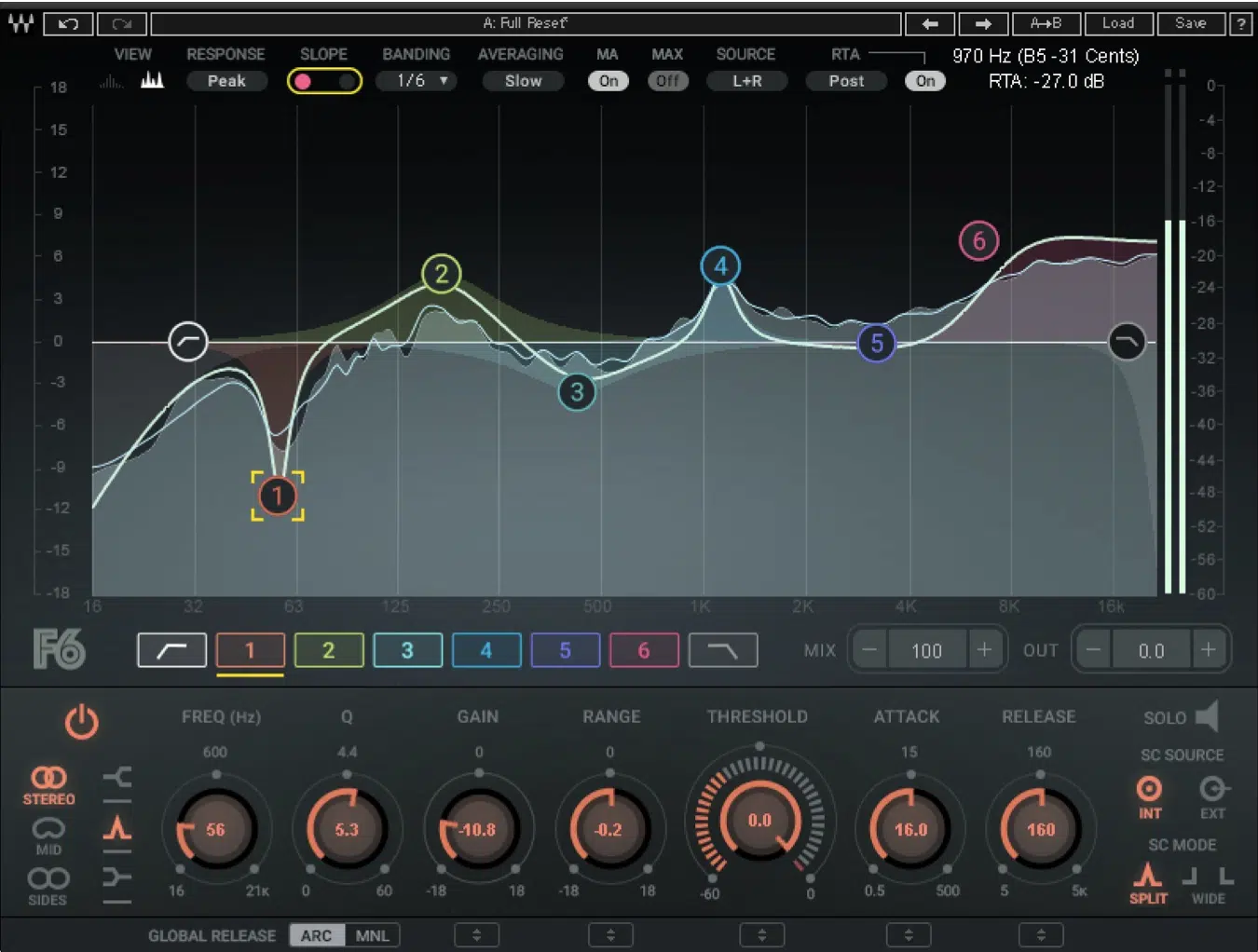
- Six fully customizable floating bands
- Independent dynamic behavior for each band
- Variety of filter types for precise control
- Real-time analyzer
Pro Tip
Use the Waves F6’s EQ functionality to control the low mids of a bass-heavy mix.
By applying a dynamic cut to the problematic frequency range, you can create a more balanced and focused low-end that remains tight and controlled, even when the bass elements are prominent.
#12. Best Innovative EQ Plugin: Infinity EQ by Slate Digital
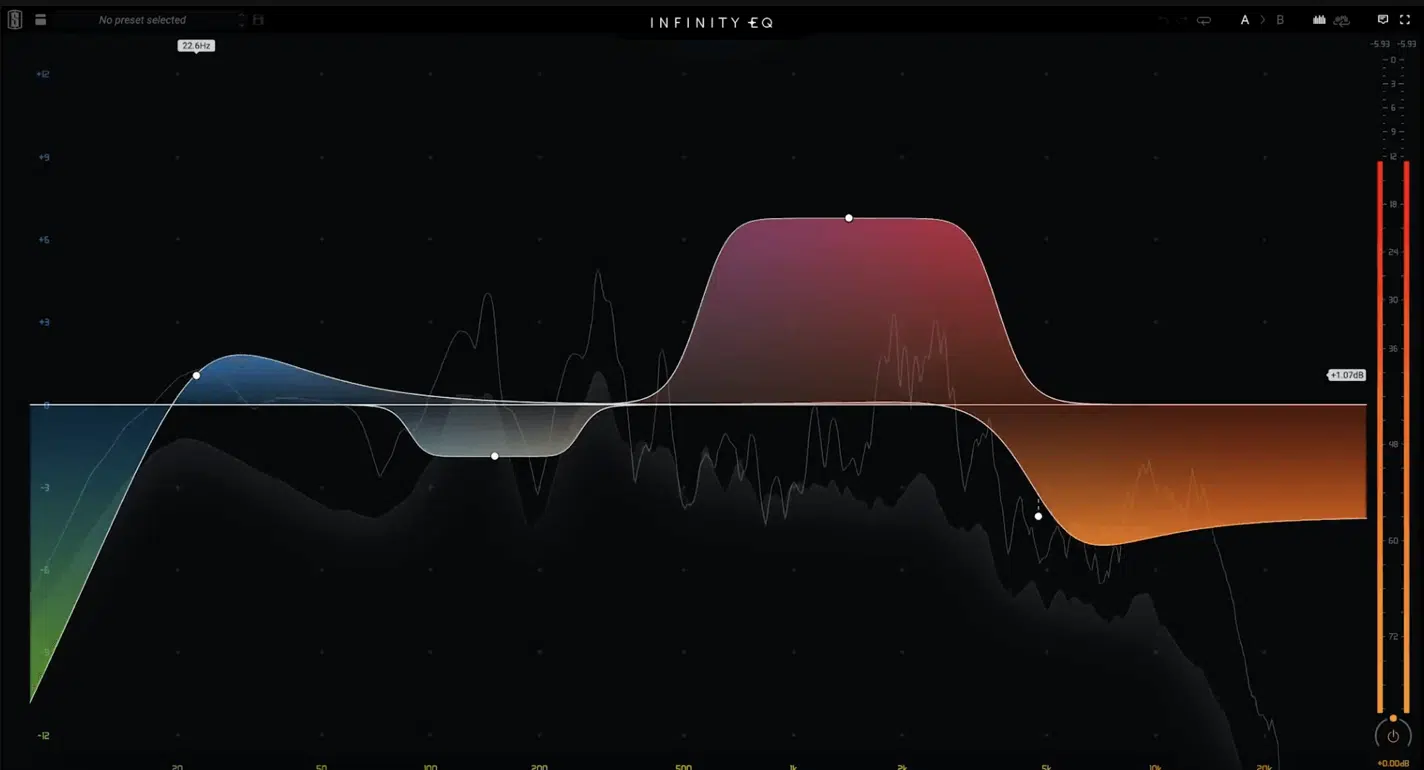
Infinity EQ is an innovative equalizer plugin that offers an intuitive, user-friendly interface and a powerful set of features, making it an ideal choice for both novice and experienced users.
With its high-resolution FFT display, highly customizable EQ bands, proportional q filters, and smart parameter interpolation, Infinity EQ provides precise control over your mix’s tonal balance.
The plugin features up to 24 fully adjustable bands, each with a variety of filter types, including high-pass, low-pass, band-pass, notch, and various shelving and bell shapes.
The resizable interface also provides a real-time analyzer, helping you visualize your audio and make informed decisions when adjusting the EQ.
One standout feature of the Infinity EQ is its unique “Zoom” functionality, which allows you to zoom in on specific frequency ranges for more precise control.
This feature makes it easier to pinpoint problematic frequencies and make surgical adjustments without affecting the overall tonality of your mix.
Standout Features:
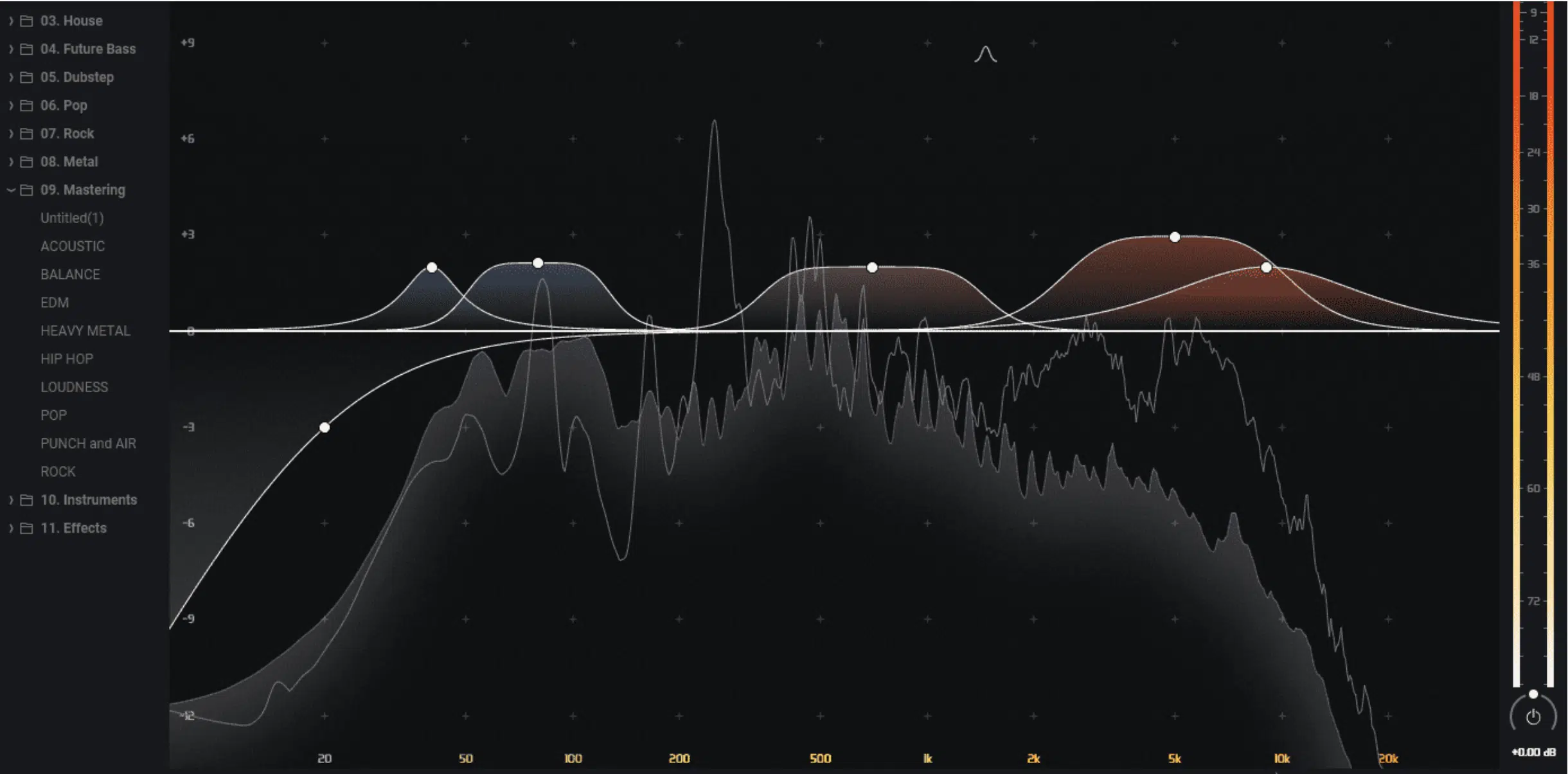
- Up to 24 fully adjustable bands
- Variety of filter types for precise control
- High-resolution FFT display
- Real-time spectrum analyzer
- Unique “Zoom” functionality for focused adjustments
Pro Tip
Utilize the Infinity EQ’s “Zoom” functionality to hone in on narrow frequency bands when dealing with problematic resonances or harshness.
By zooming in on the affected area, you can make precise adjustments without impacting the overall sound of your mix.
The Importance of Low Pass Filters and High Pass Filters in EQ
A key aspect of EQ in most music production courses is the use of filters, specifically low-pass and high-pass filters.
These filters play a crucial role in cleaning up and shaping the frequency spectrum of your mix.
NOTE: If you’re looking for the best EQ plugins of 2023, look no further.
-
Low Pass Filters
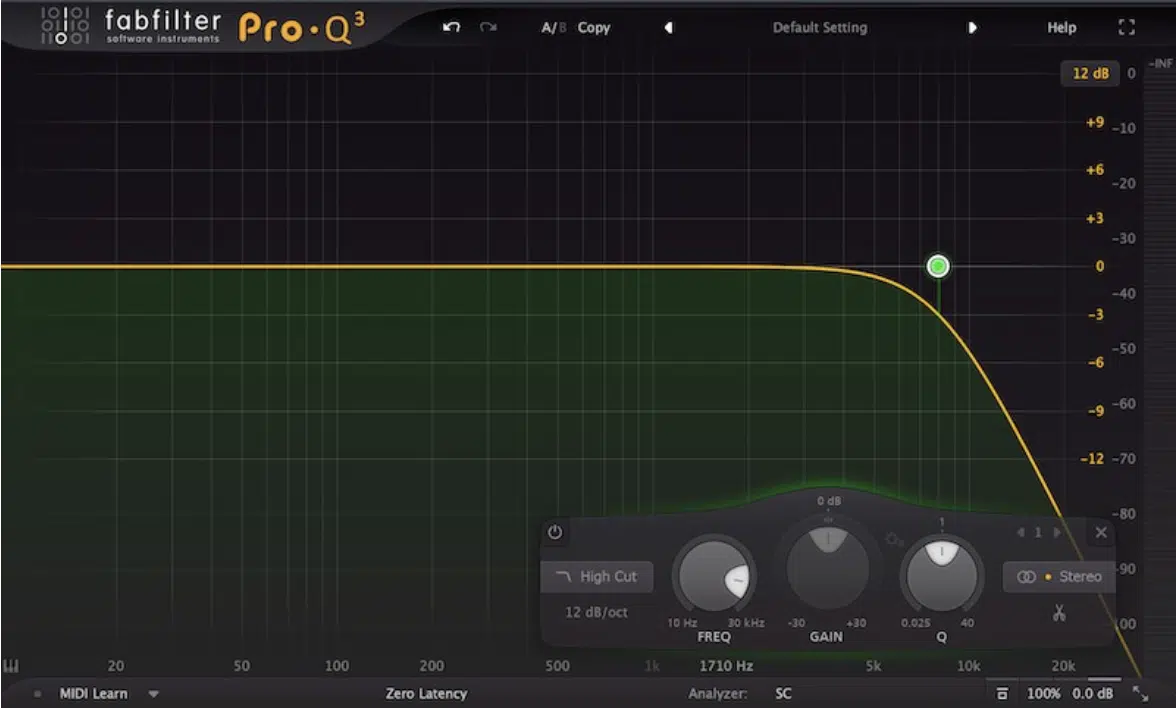
LPFs are designed to attenuate frequencies above a specified cutoff point, allowing only the lower frequencies to pass through.
They can be incredibly helpful in eliminating unwanted frequencies in the high-end, such as harshness or noise while preserving the warmth and body of a standard EQ sound.
- Reducing high-frequency clutter
- Softening overly bright or harsh elements
- Creating a more focused mix
Mastering the art of low-pass filters is crucial when it comes to perfecting your mix.
-
High Pass Filters
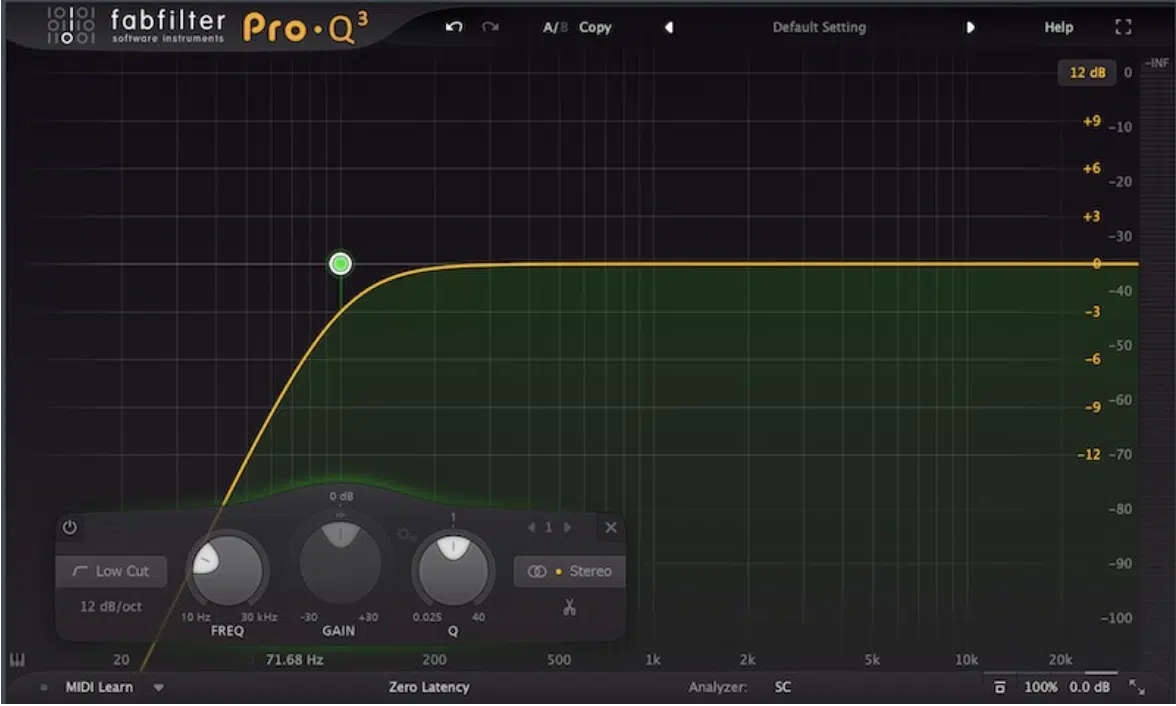
On the other end of the spectrum, high-pass filters attenuate frequencies below a specified cutoff point, allowing only the higher frequencies to pass through.
They can be invaluable for removing low-frequency rumble or mud, ensuring that your mix remains tight and well-defined.
- Removing low-frequency rumble or mud
- Creating space for the bass and kick elements
- Preventing frequency masking and overlap
To insure your mix is not muddy, you have to make high-pass filters your buddy.
Building Your Plugin Library
When building your library, it’s crucial to strike a balance between using stock eq plugins and investing in third-party options.
Both have their advantages and can contribute to a well-rounded and versatile collection of EQ plugins.
Stock daw eq plugins are often underestimated, but they can be powerful tools in your music production arsenal.
They are designed to integrate seamlessly with your DAW and usually offer a straightforward user interface, making them easy to use and understand.
- Integrating seamlessly with your DAW
- Straightforward user interfaces
- A solid foundation for your plugin library
Third-party plugins often provide additional features, unique sound characteristics, and more versatility than stock plugins.
- Additional features and versatility
- Unique sound characteristics
- Catering to specific needs and preferences
They can cater to specific needs, tastes, and workflows, allowing you to customize your music production environment.
Conclusion
With our carefully curated list of the 12 best EQ plugins, detailed reviews, notable features, and advanced tips, you’re now equipped with the knowledge to make informed decisions and find the best EQ plugins for your unique music production needs.
But remember, while these plugins are powerful tools that can transform your sound, it’s essential to understand that they are just a part of the bigger picture.
The key to great music production lies in your creativity, skill, and dedication to constantly learning and improving your craft.
So, experiment with these EQ plugins, explore new techniques, and never stop pushing the boundaries of what’s possible.
As you continue to grow and evolve as a music producer, you’ll develop the unique sonic signature that sets you apart from the rest.
And with the best EQ plugins in your arsenal, you’ll be well on your way to crafting mixes that truly stand out.
Go ahead and dive into the world of equalization with confidence, and let your music production journey reach new heights!
Until next time…







Leave a Reply
You must belogged in to post a comment.